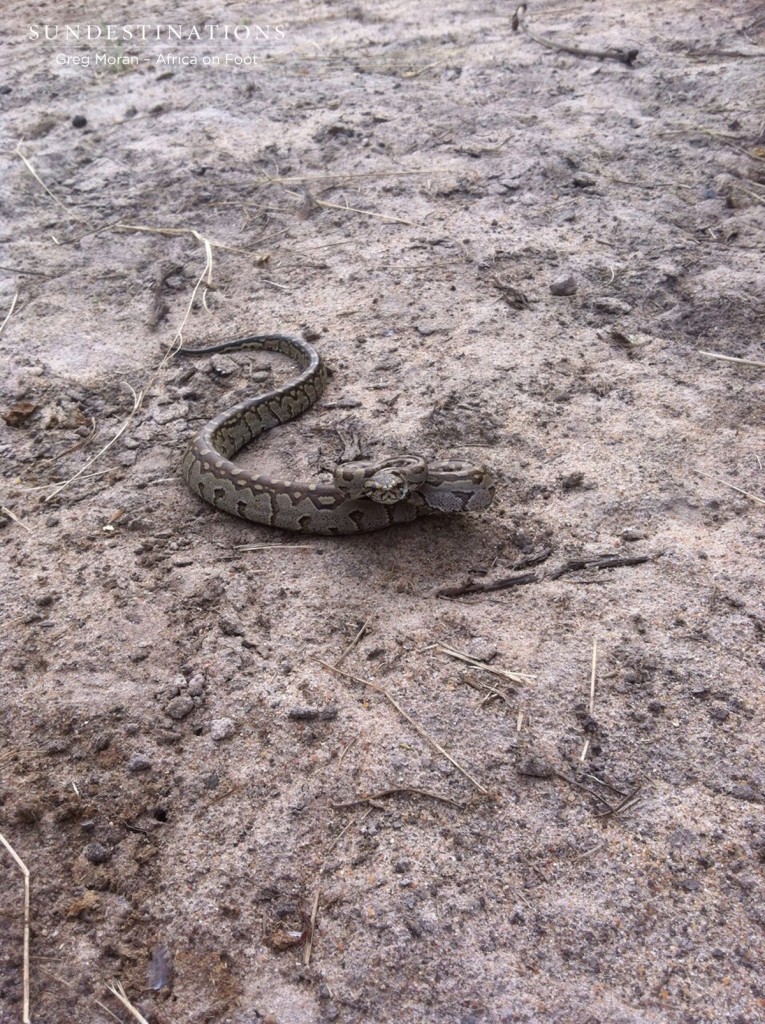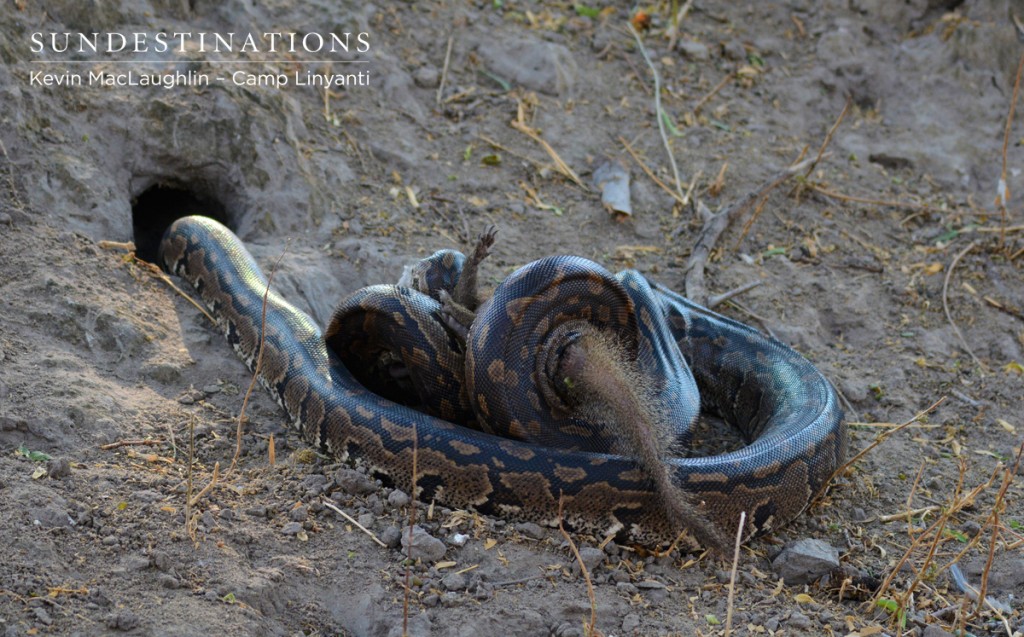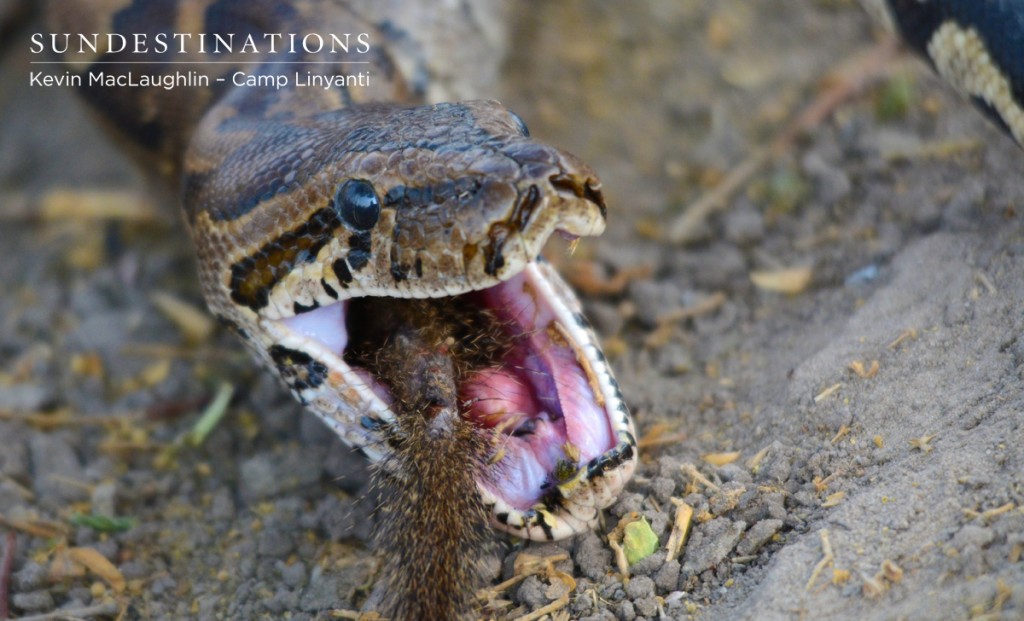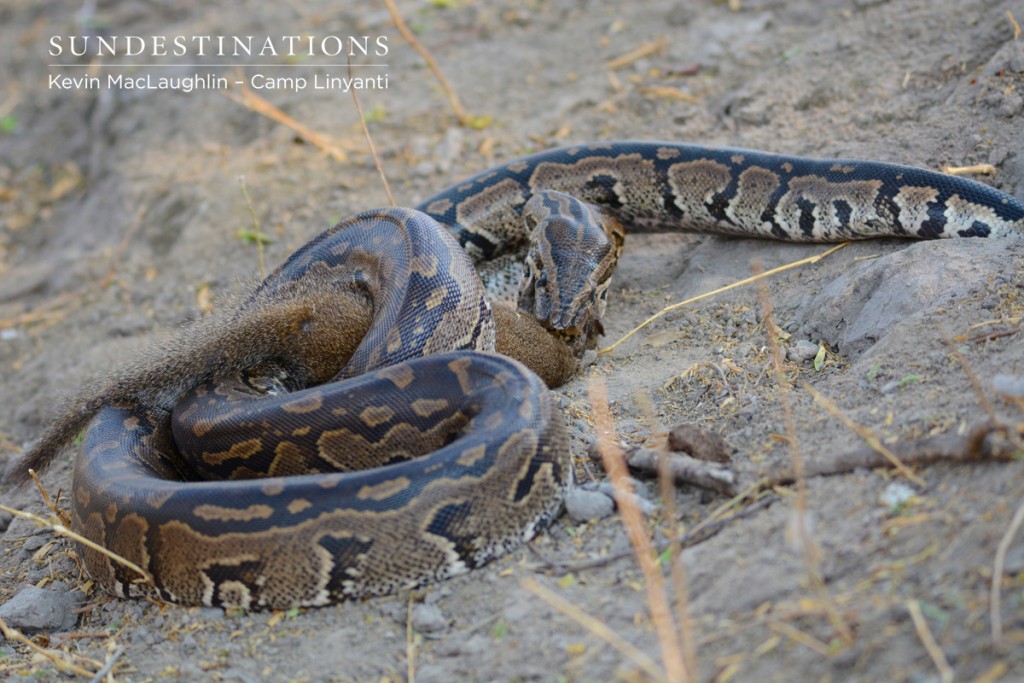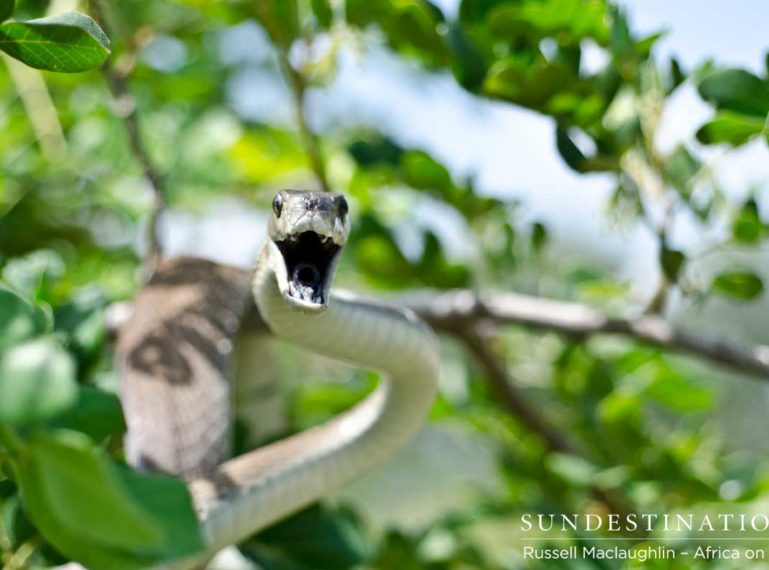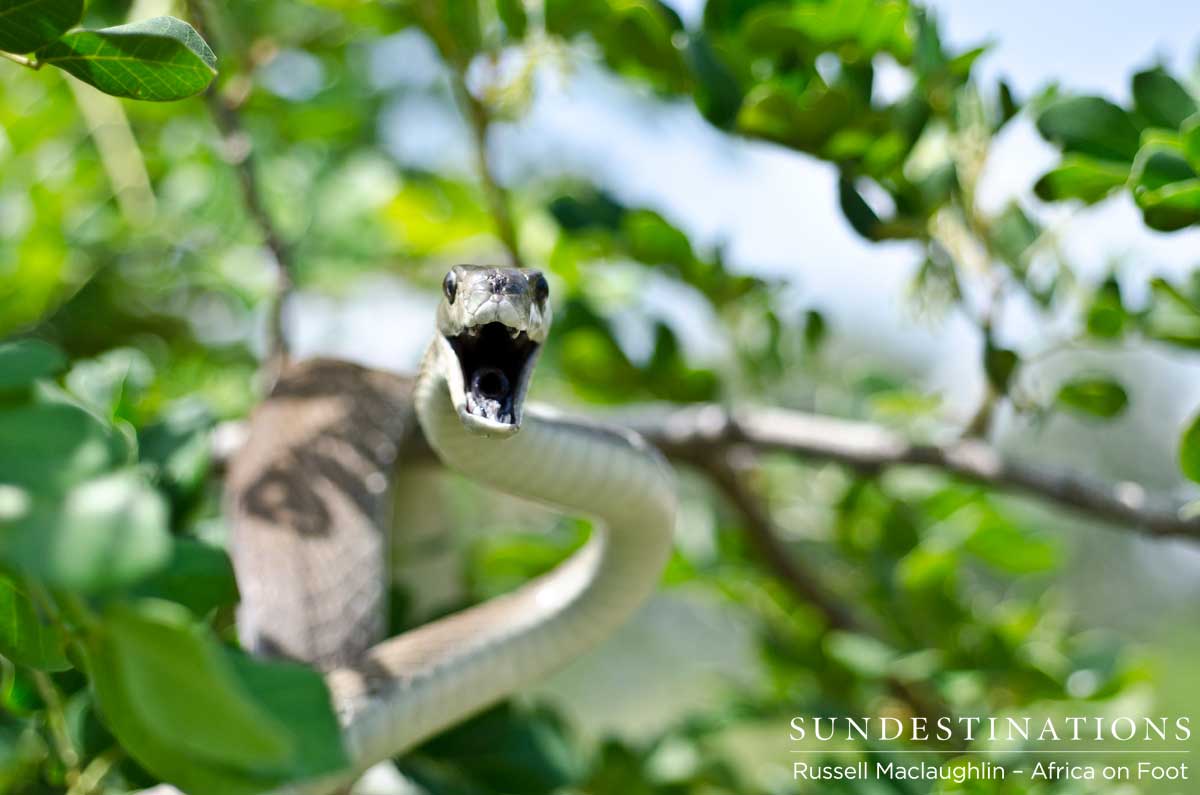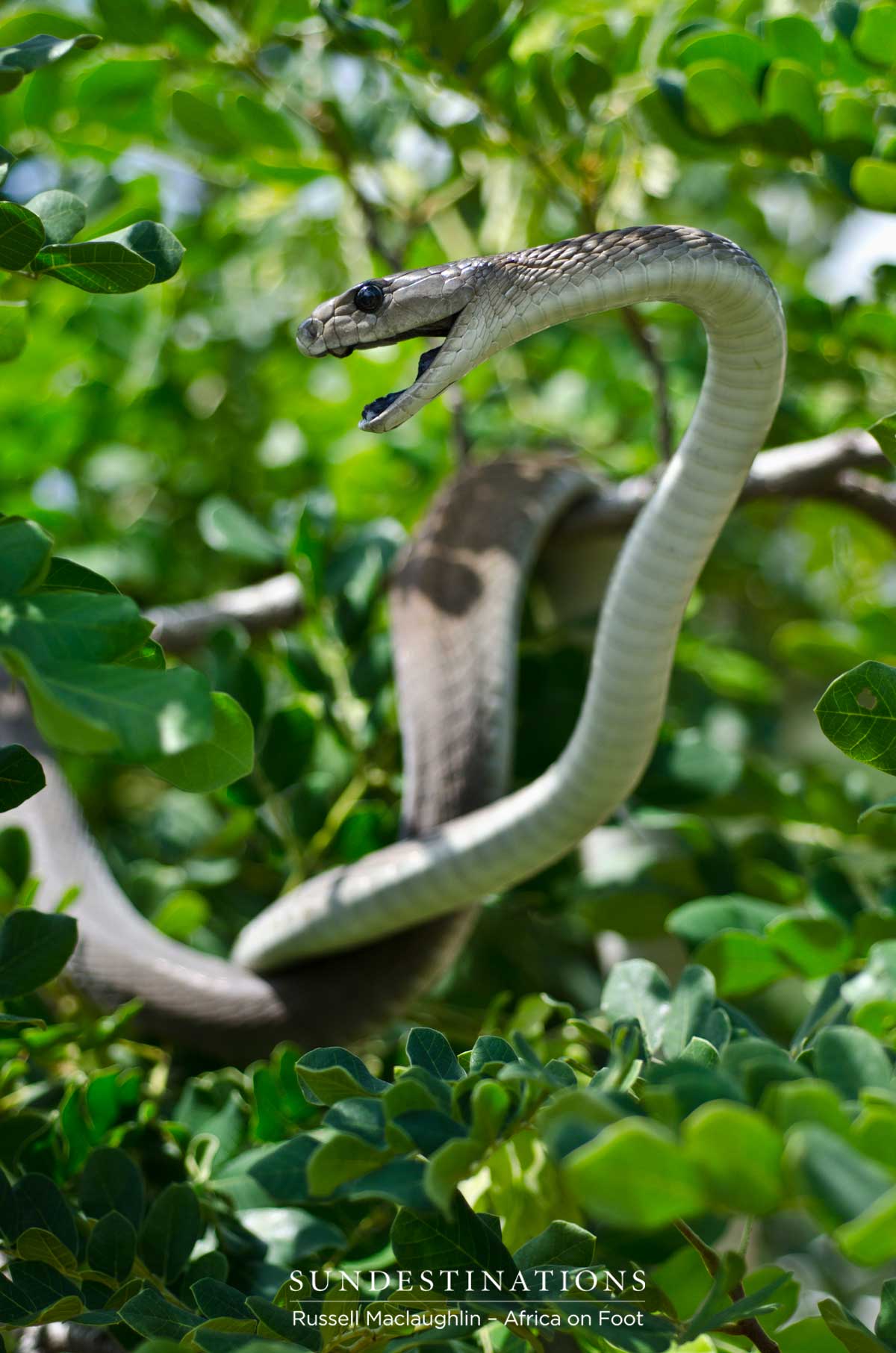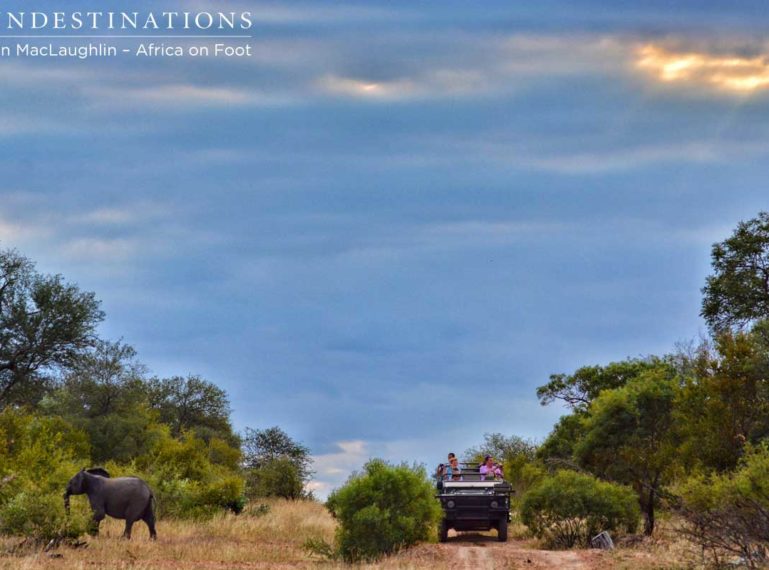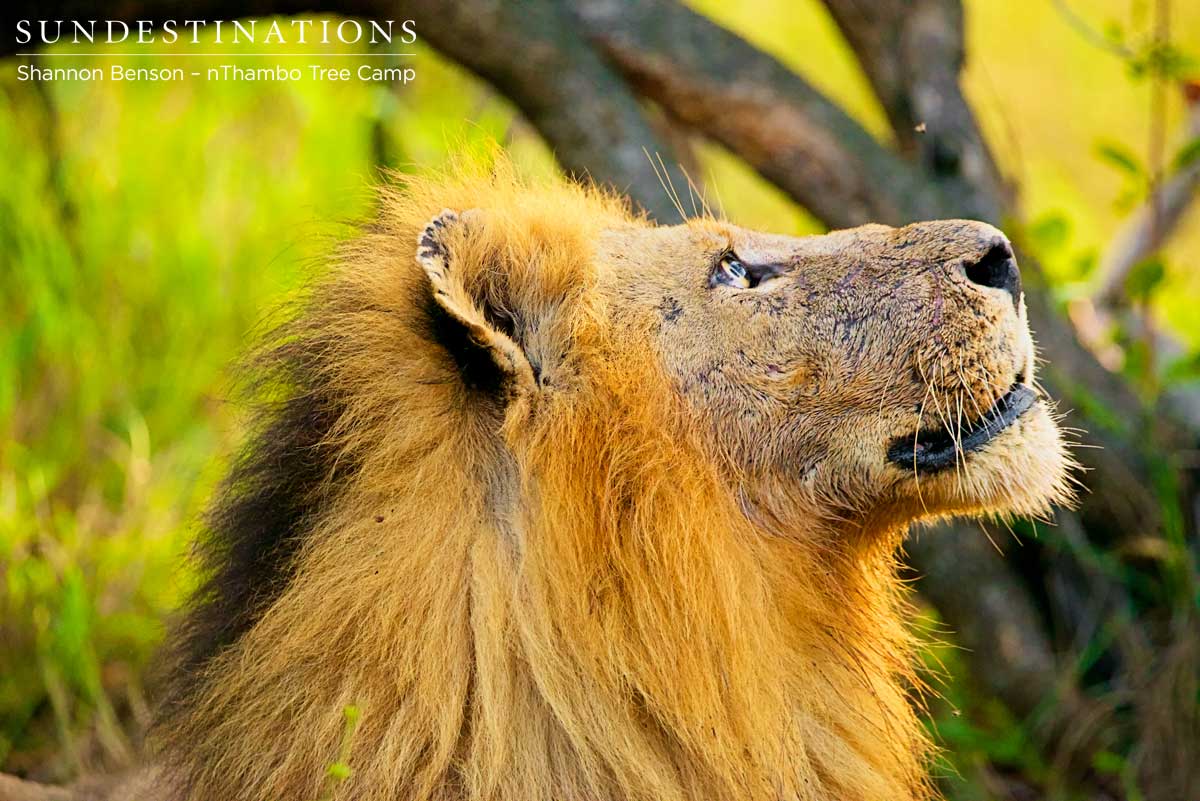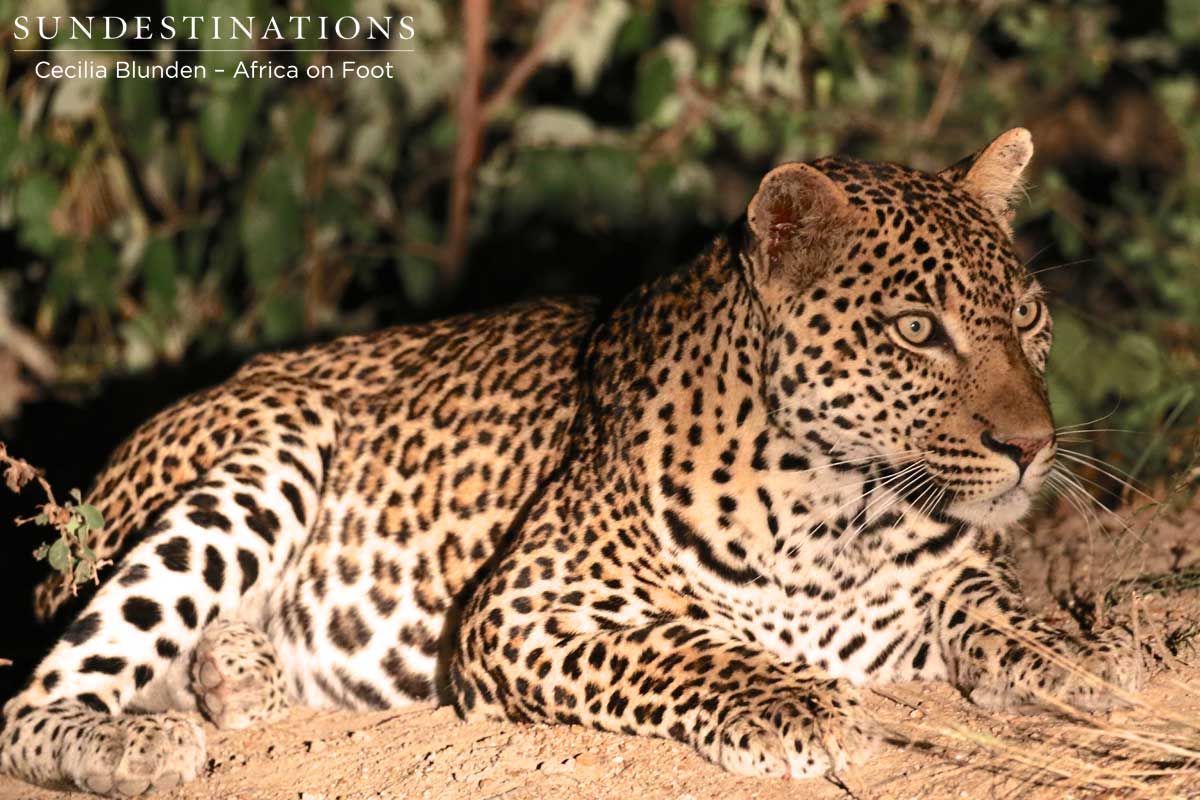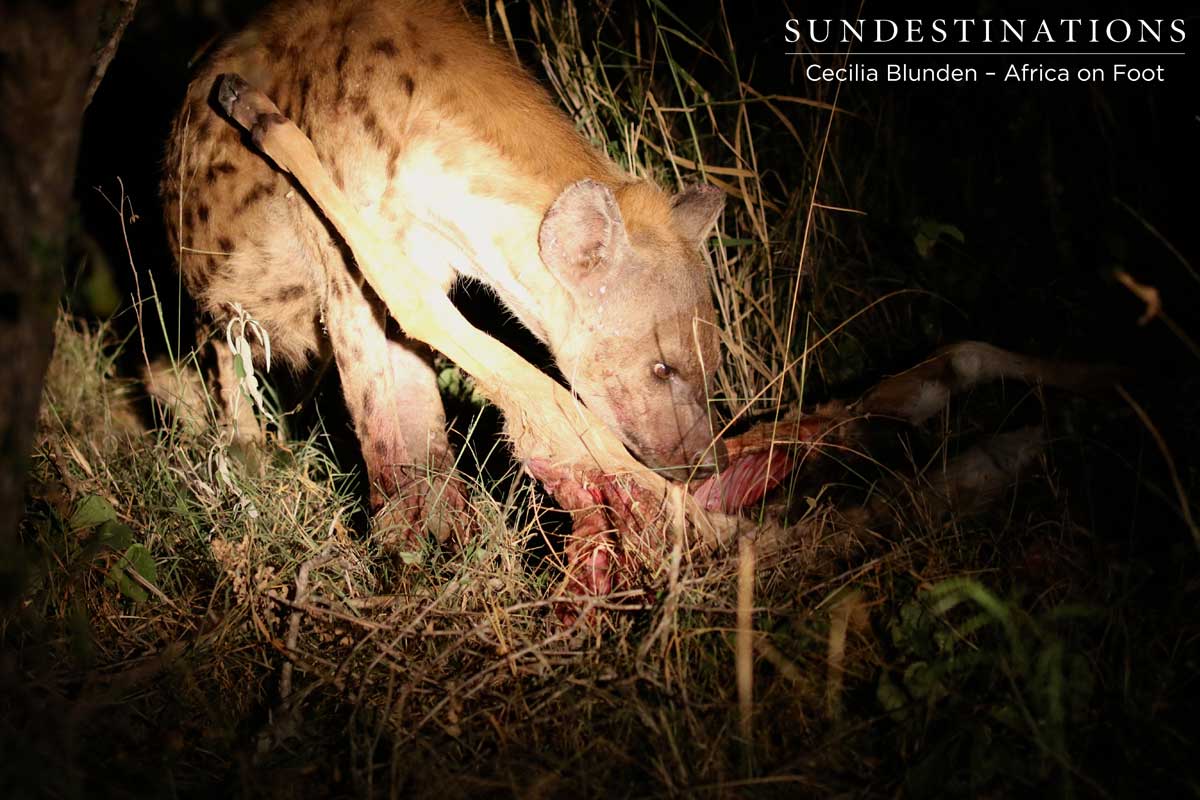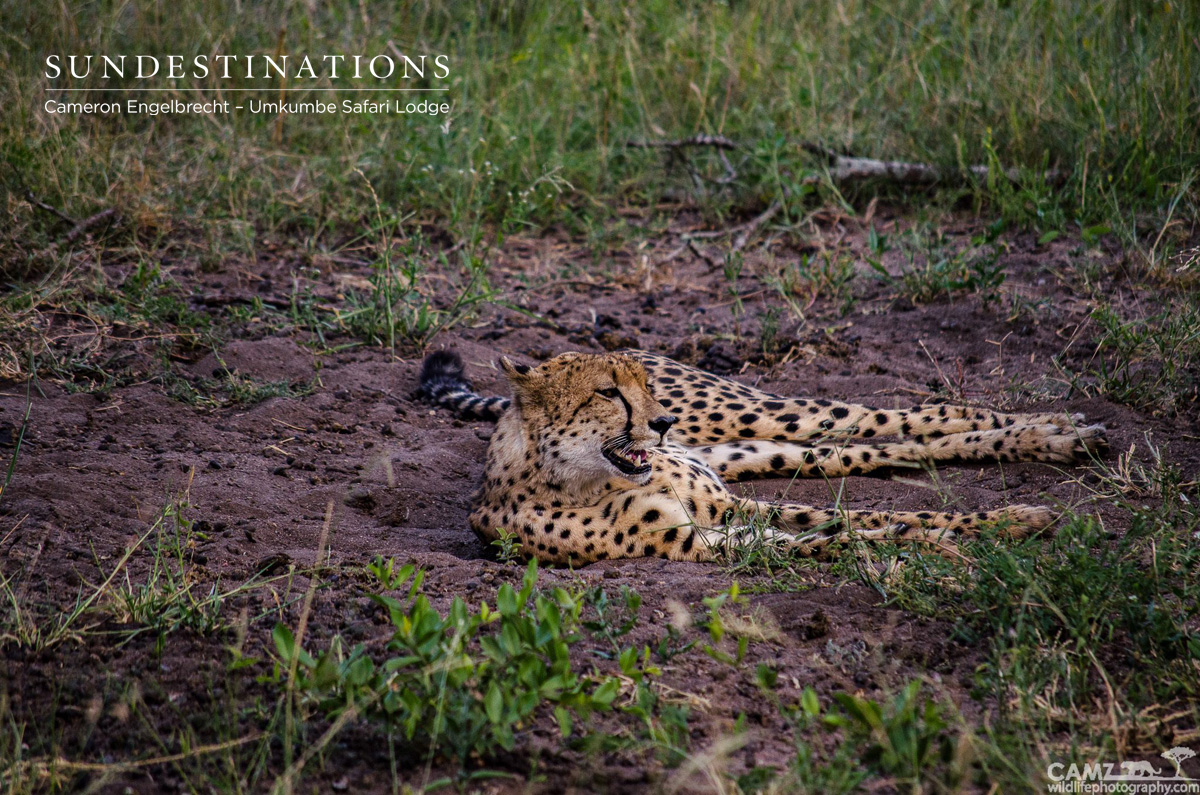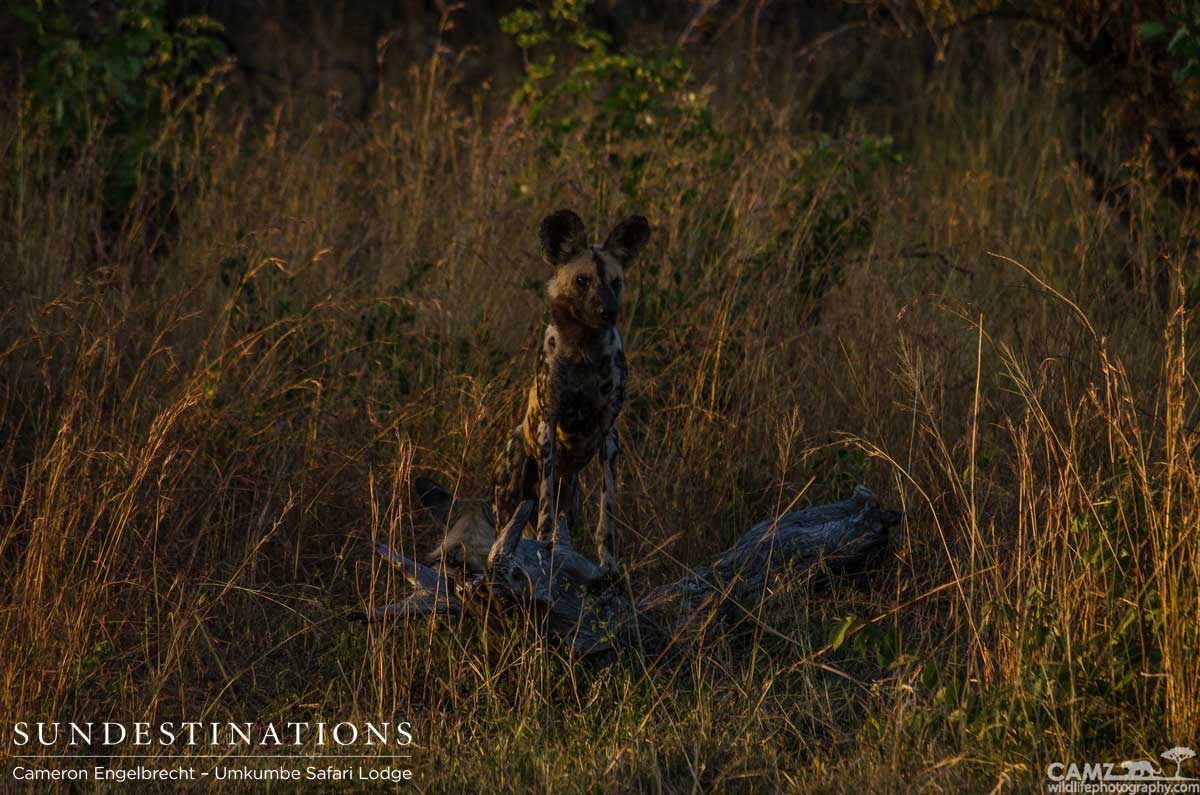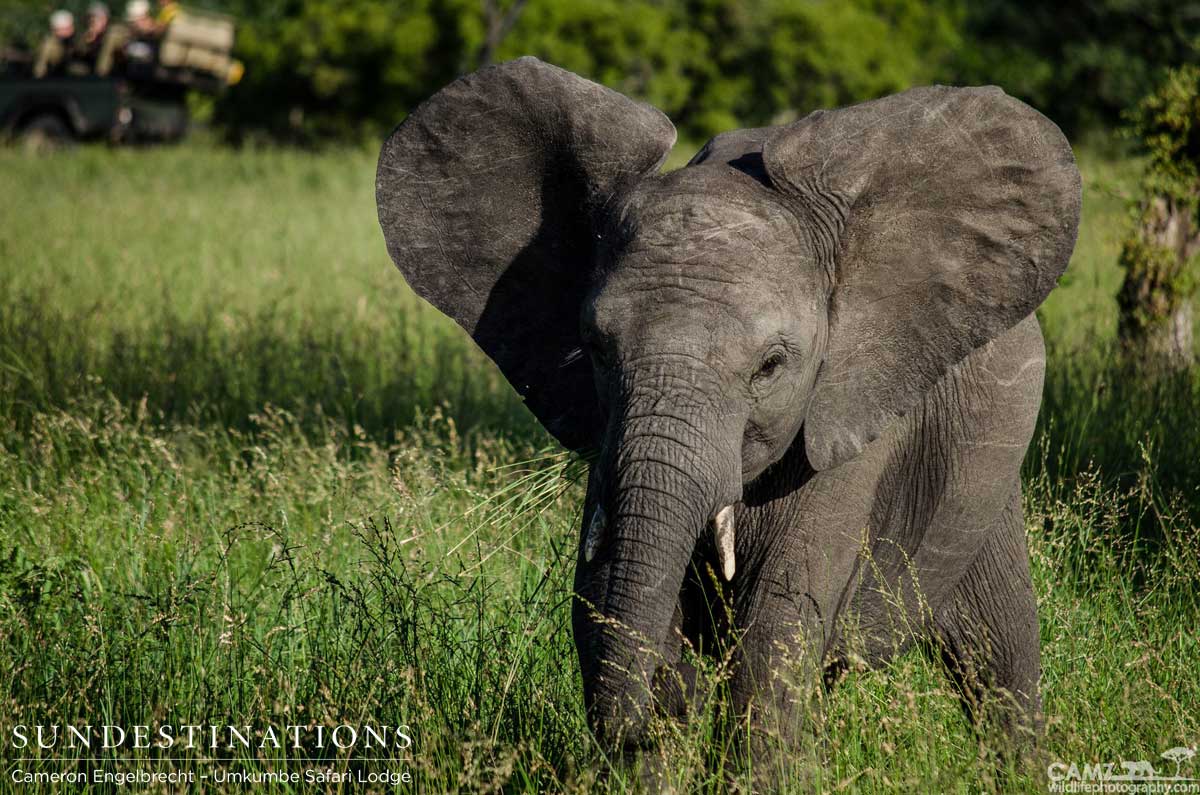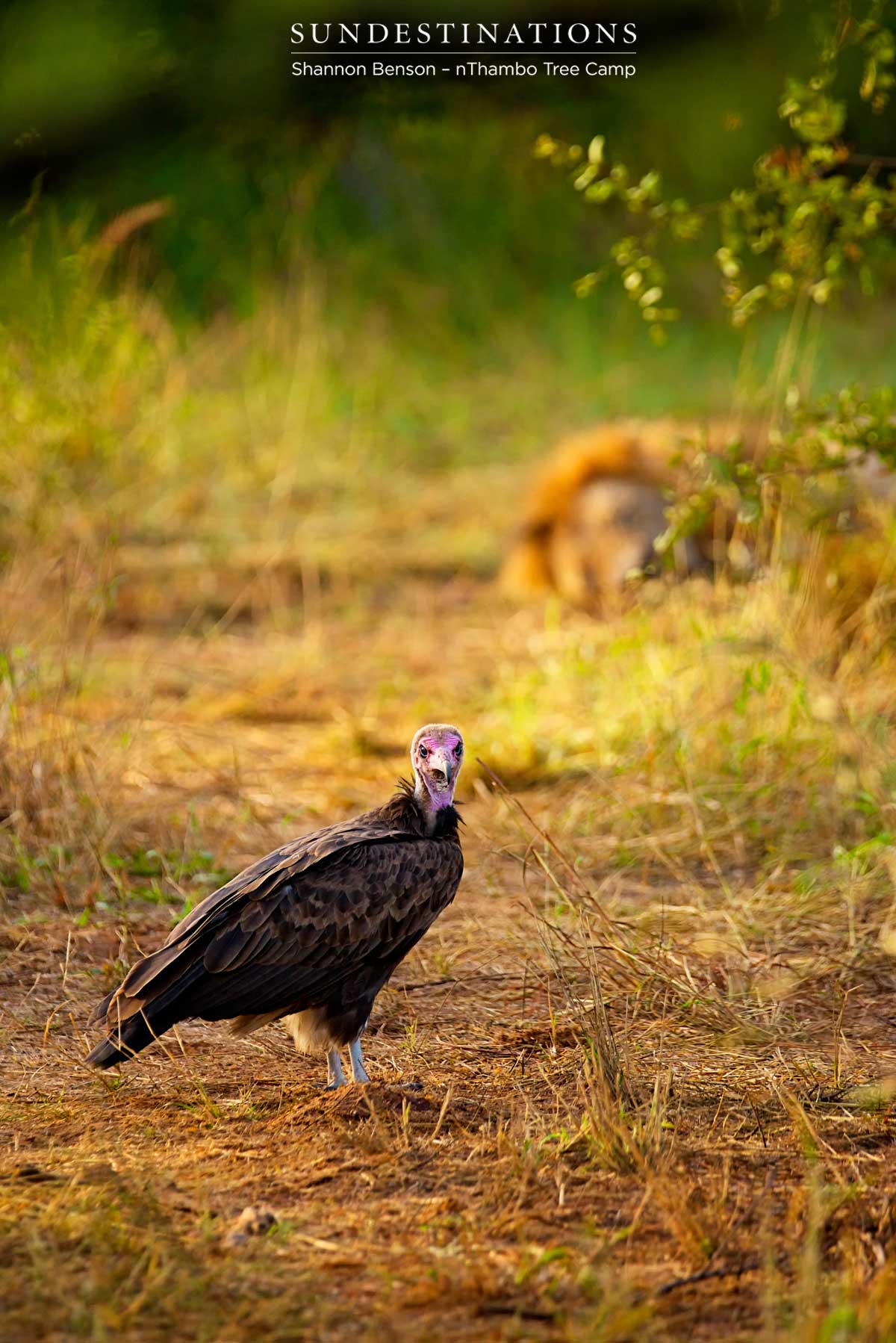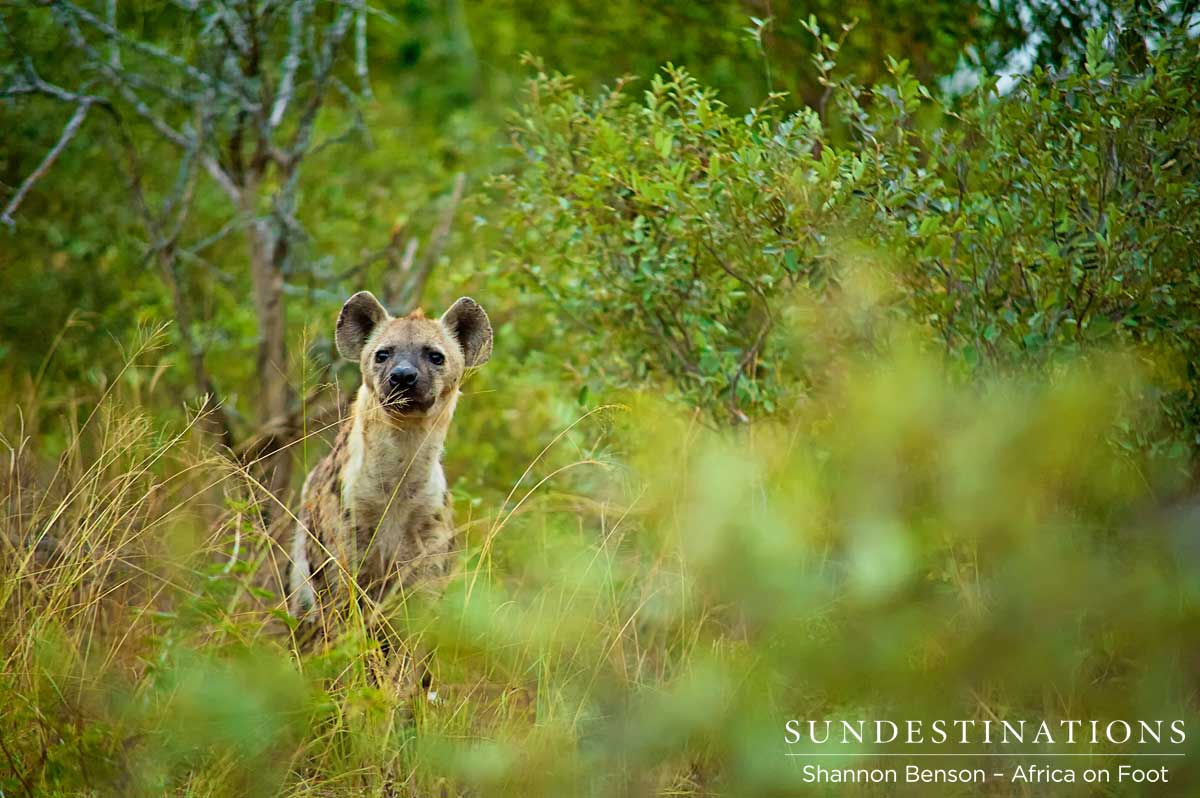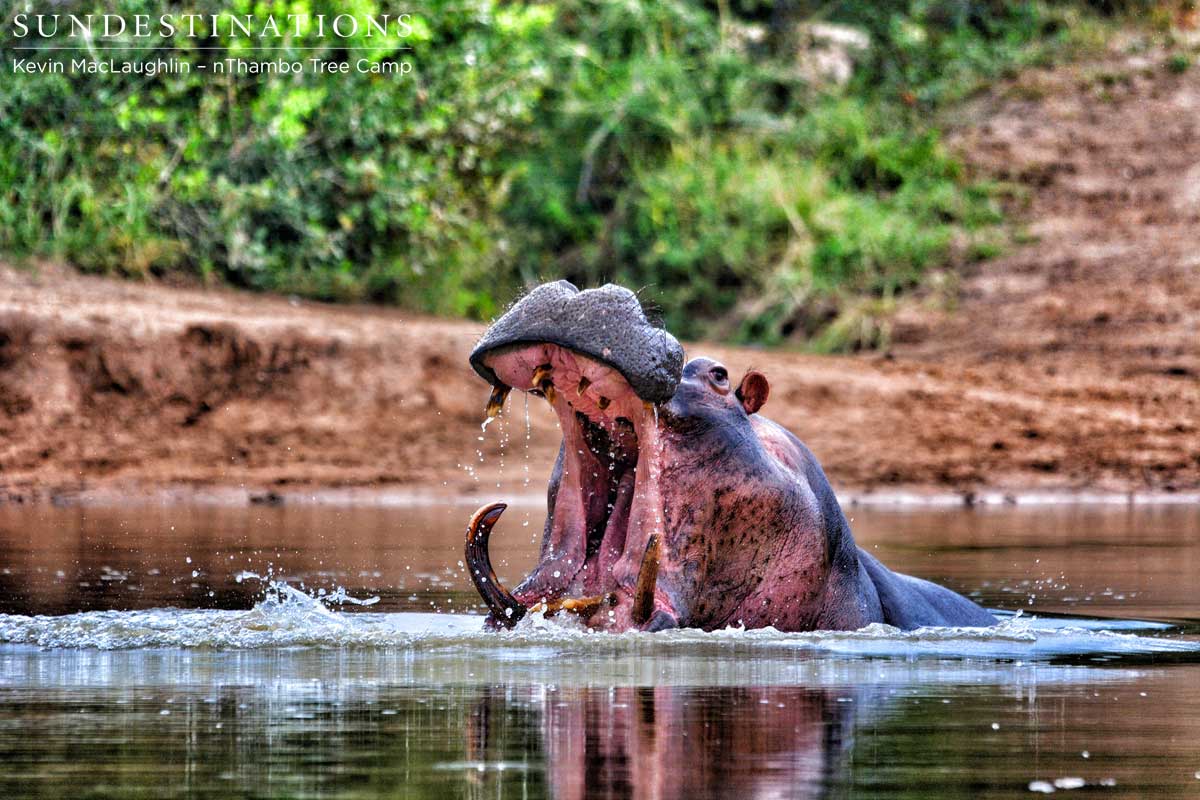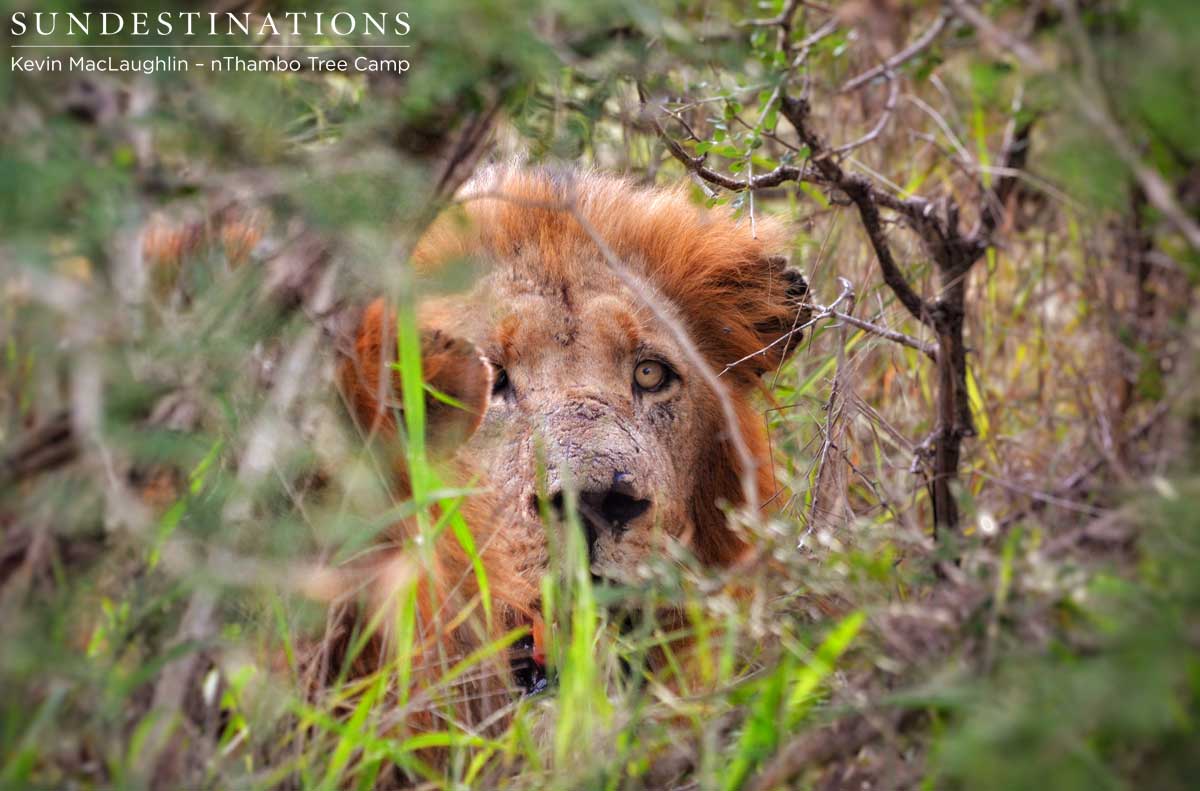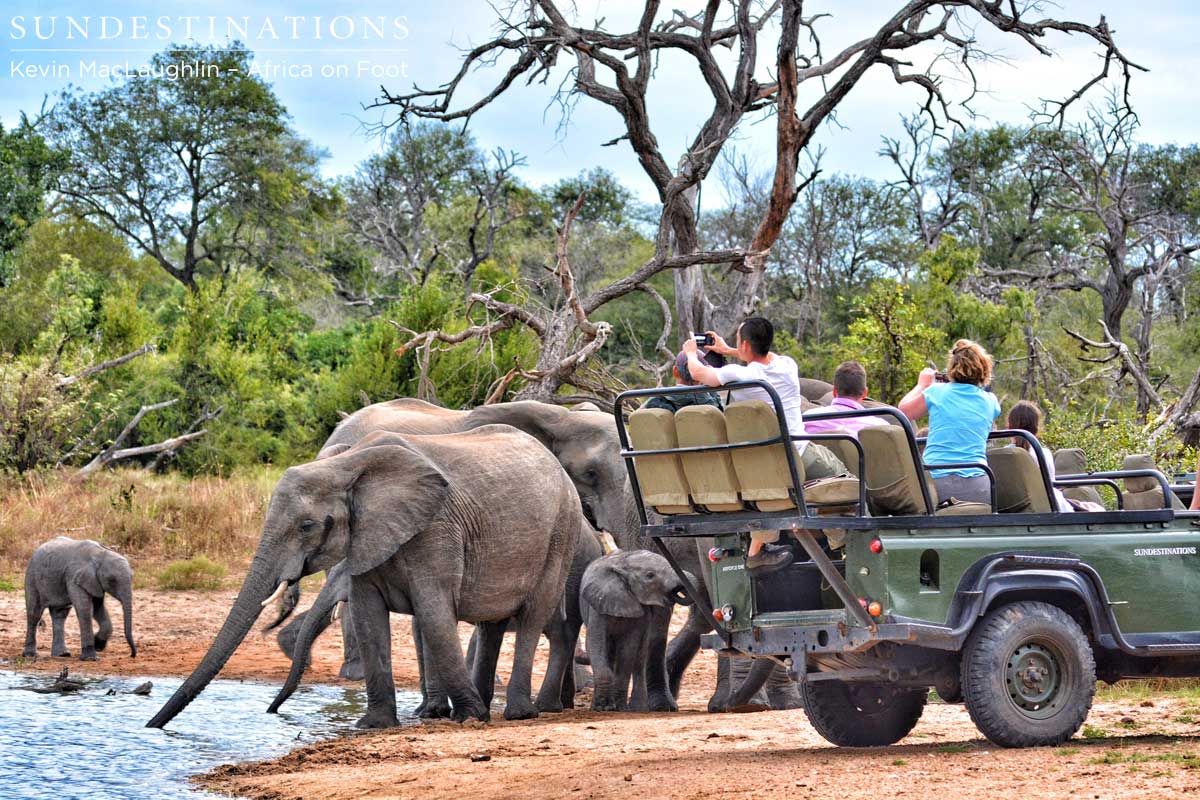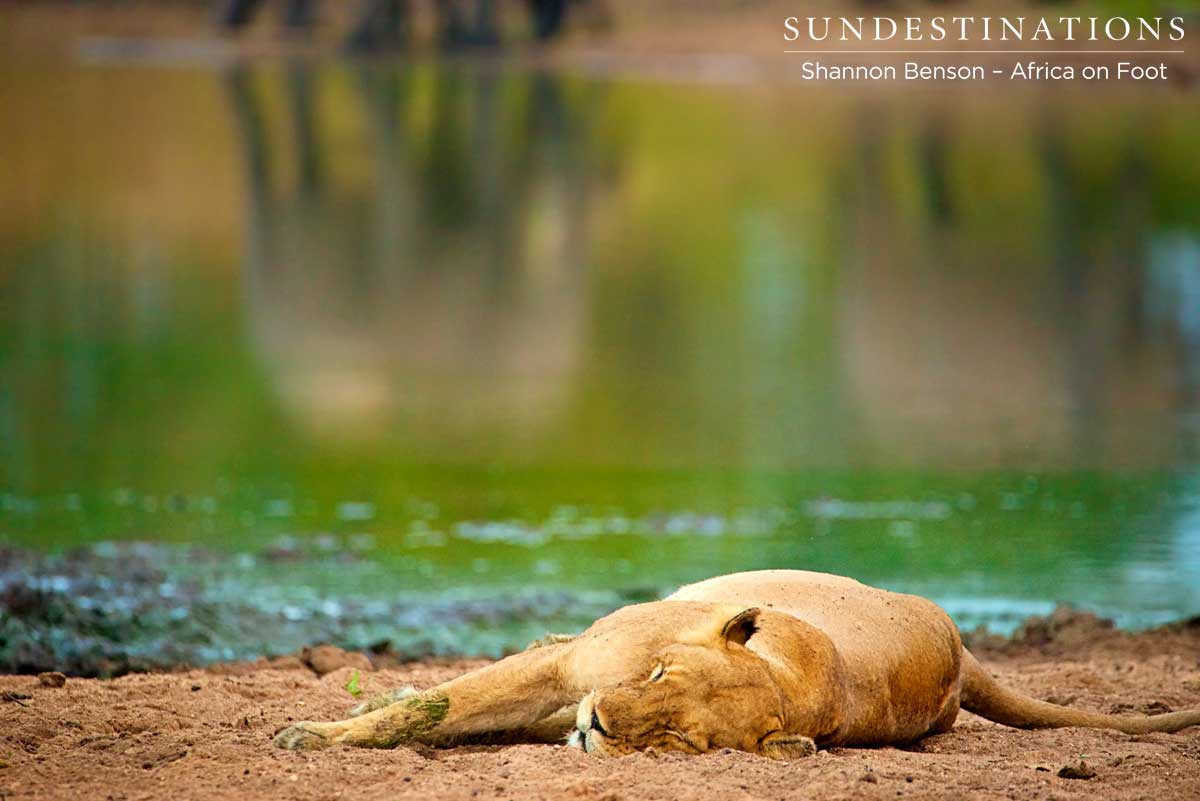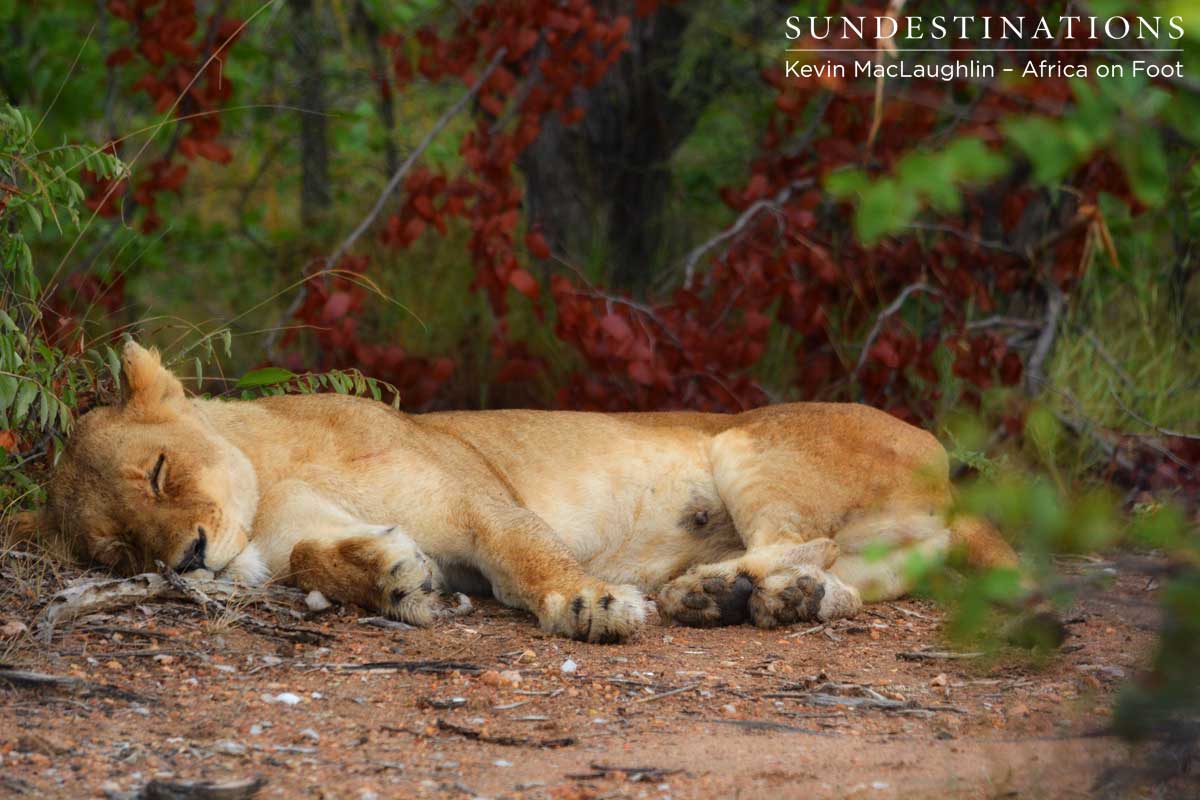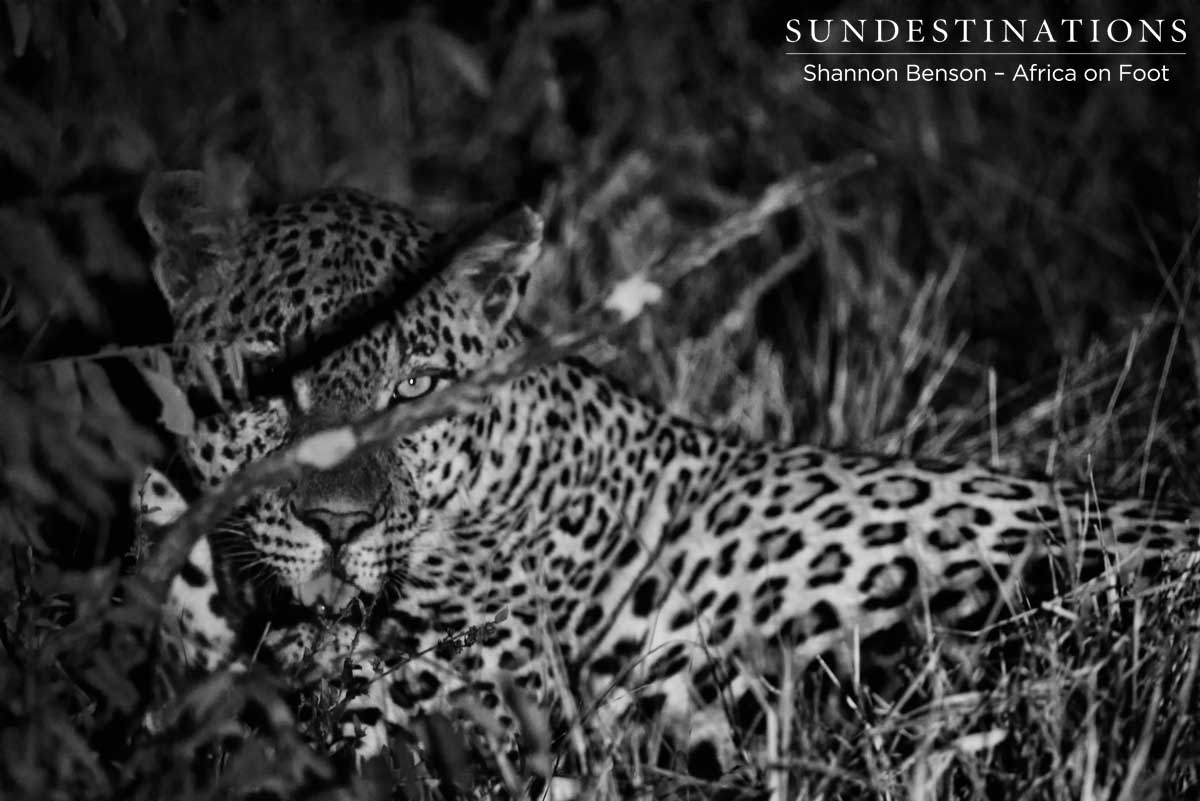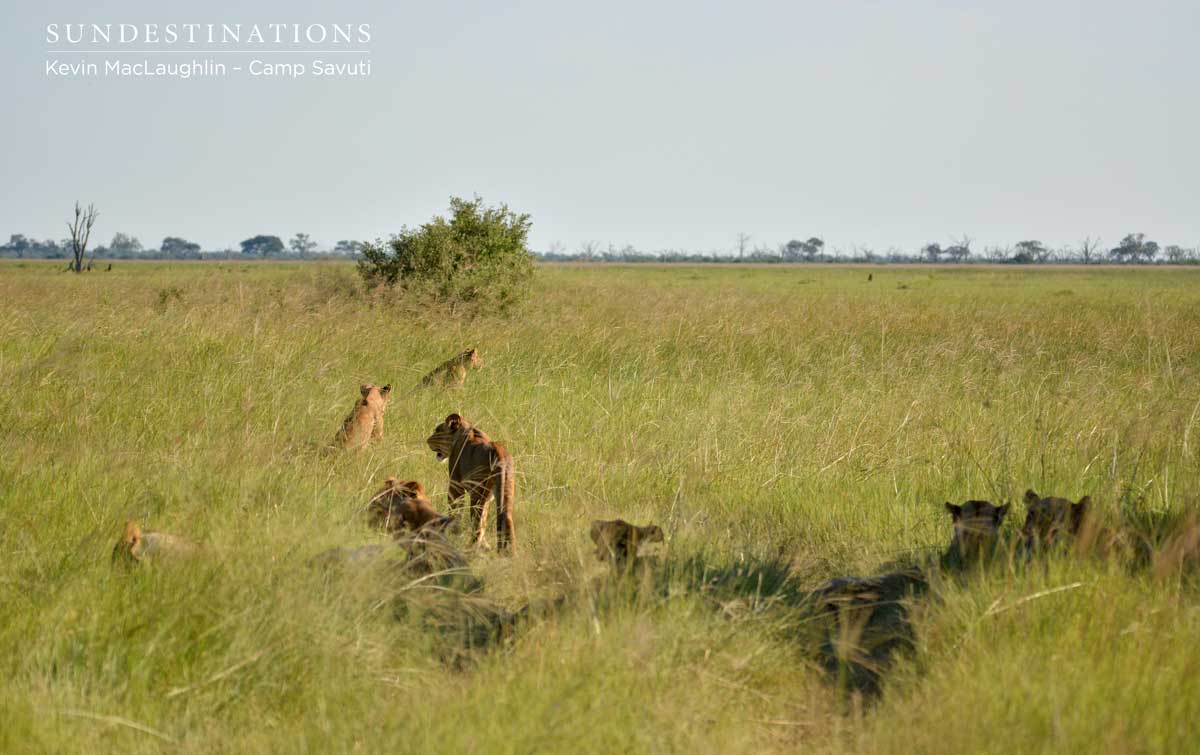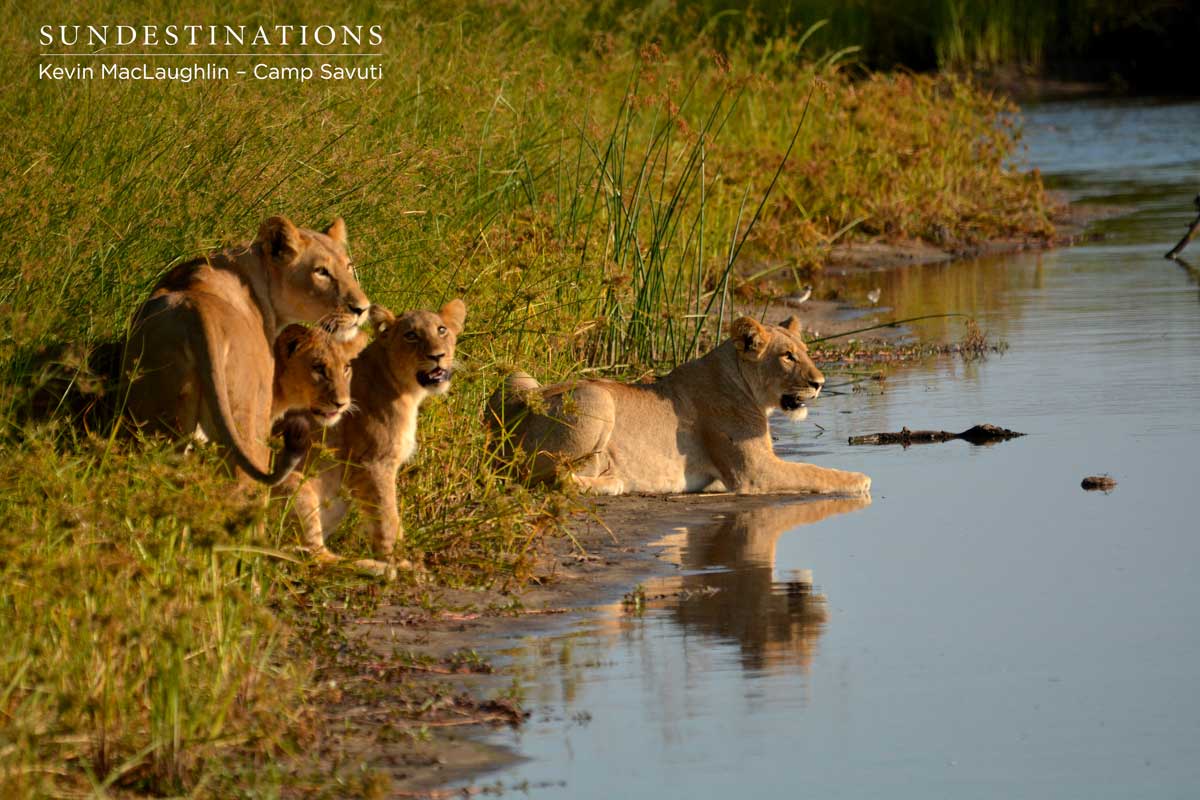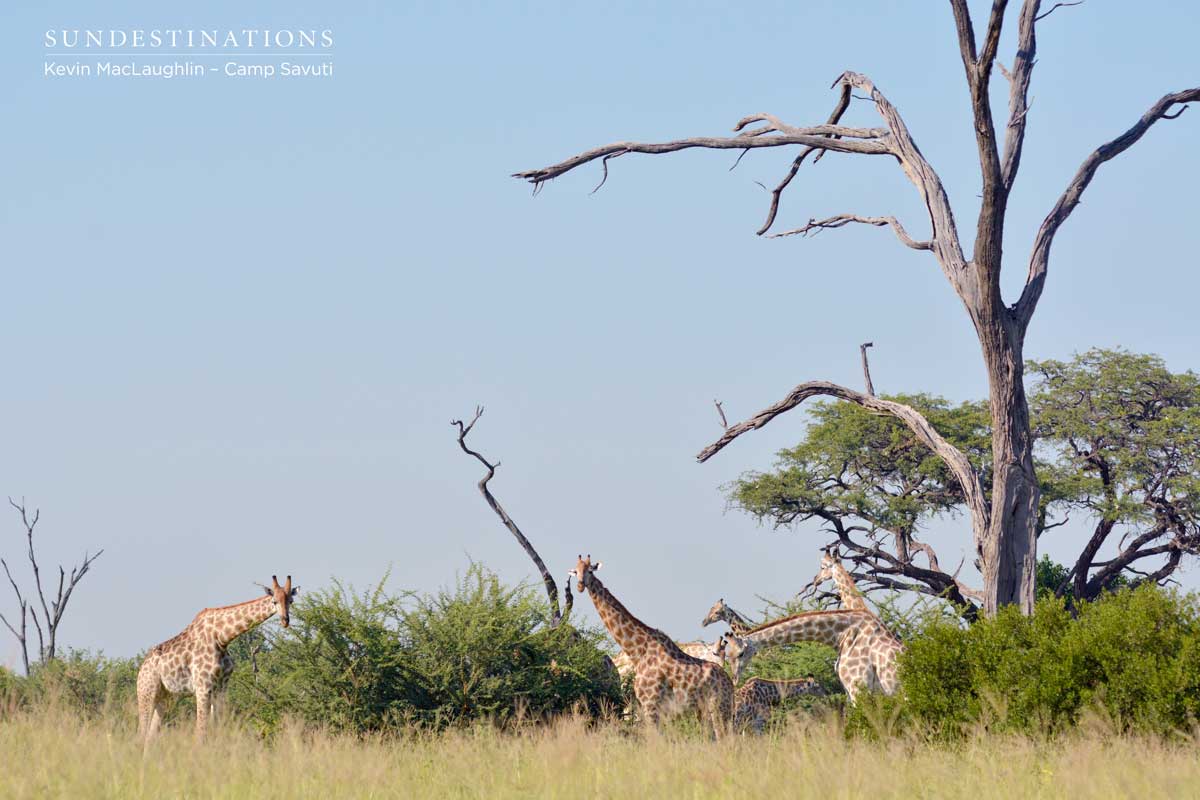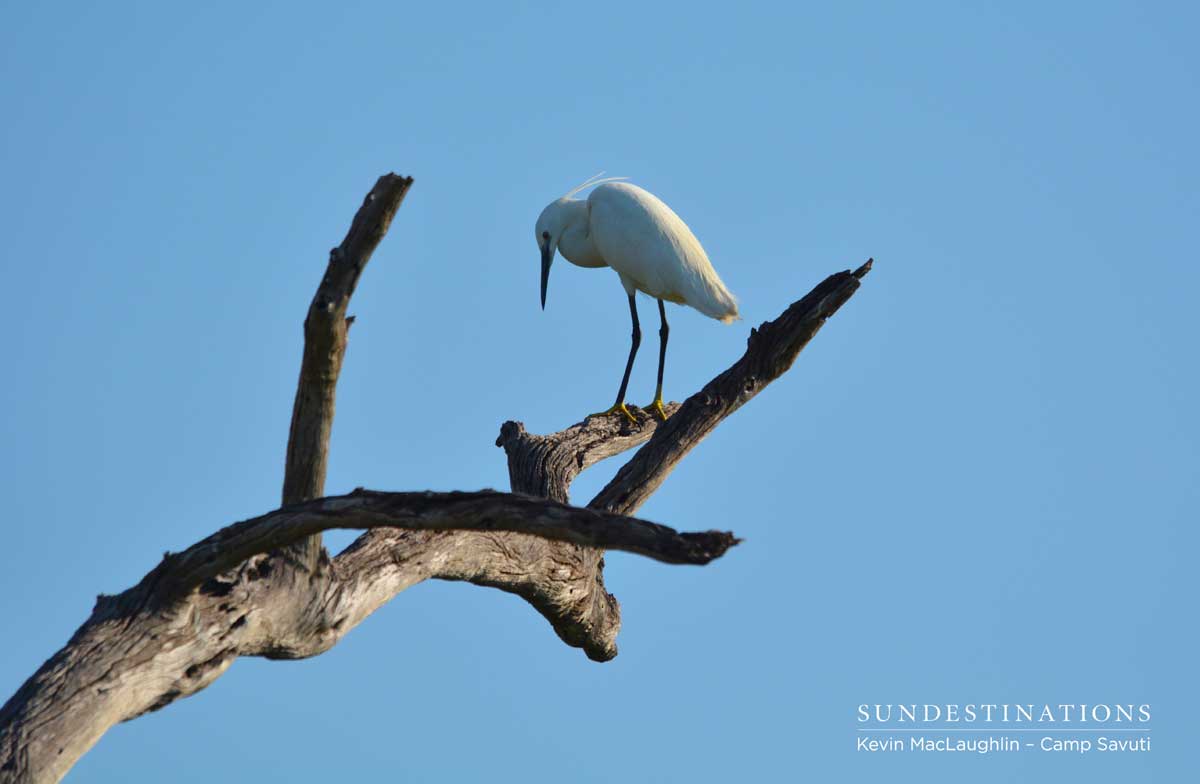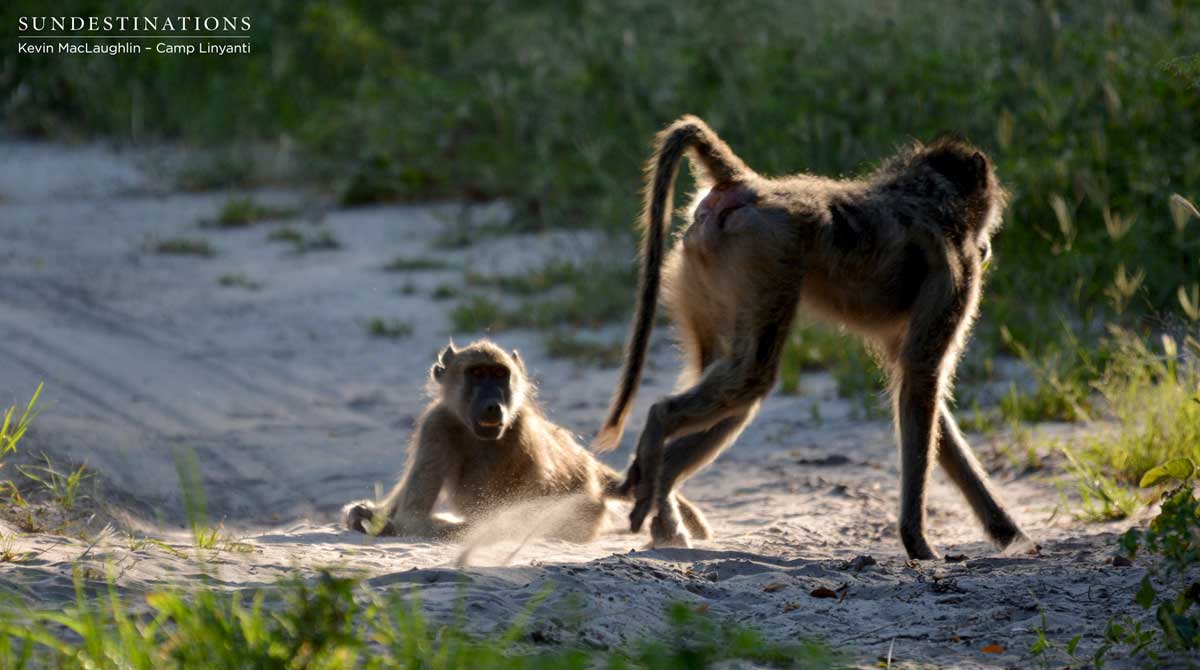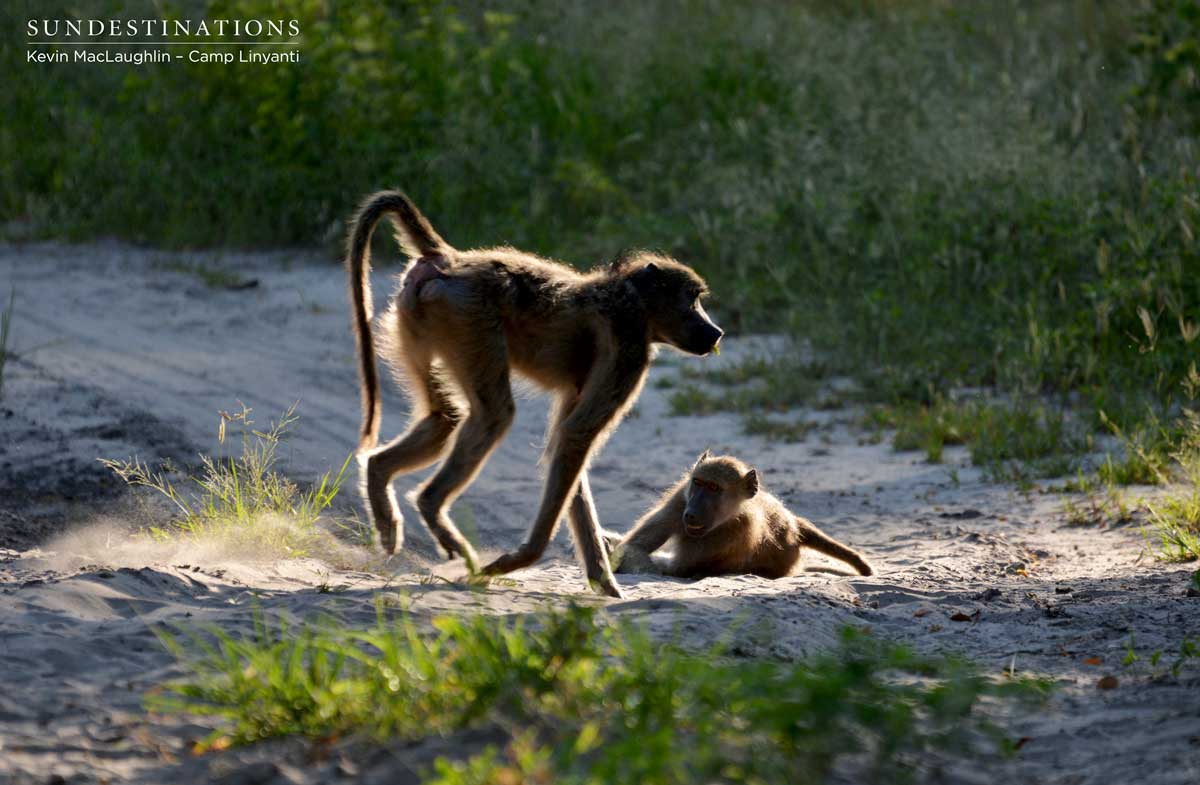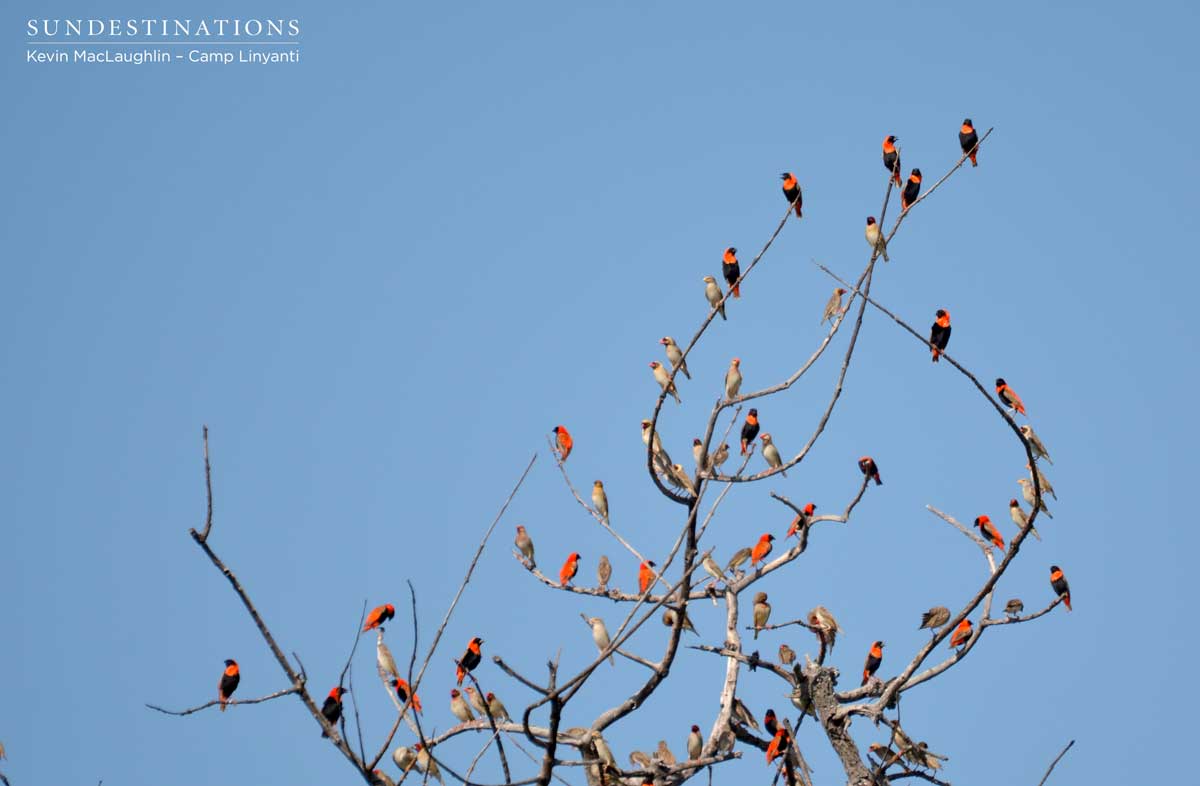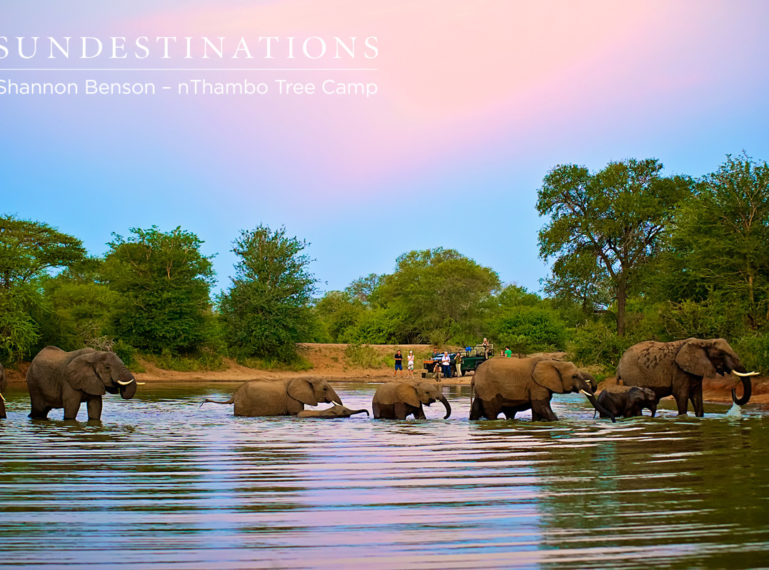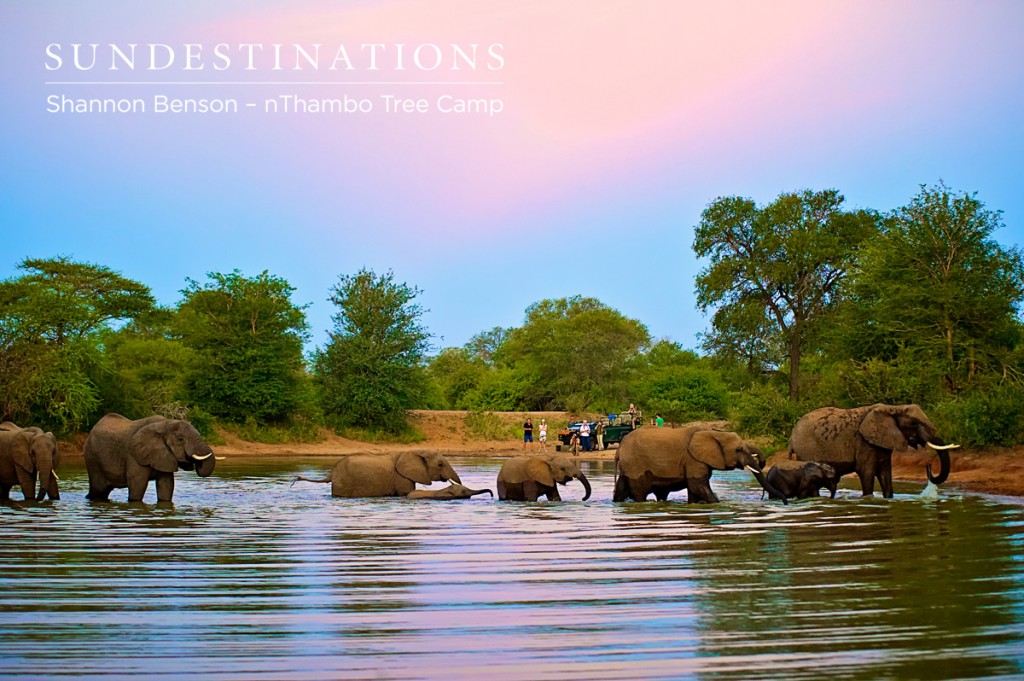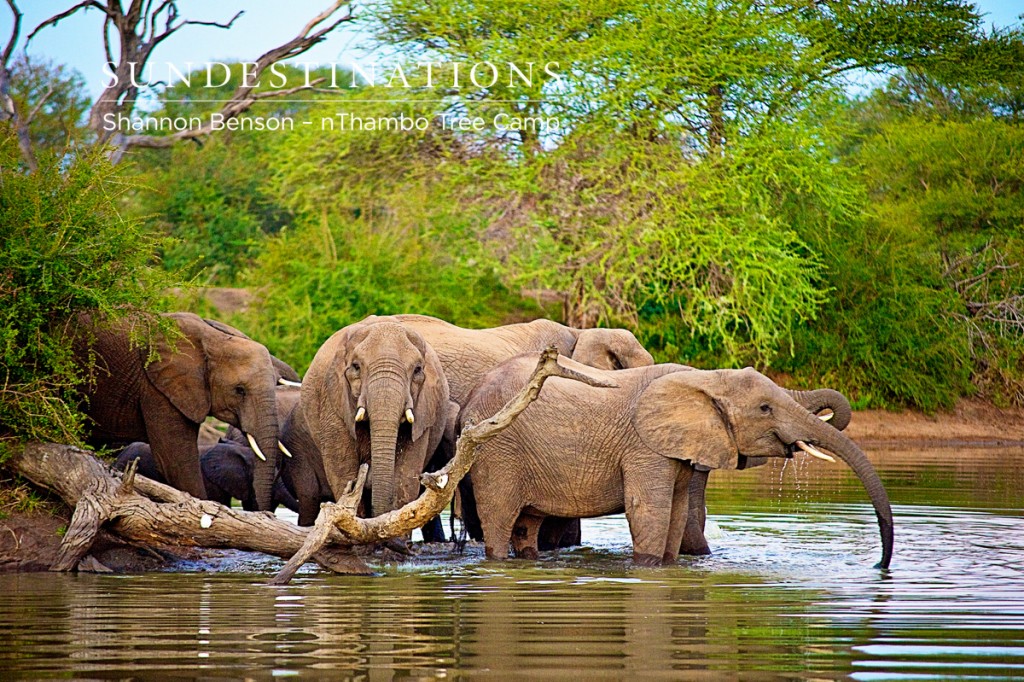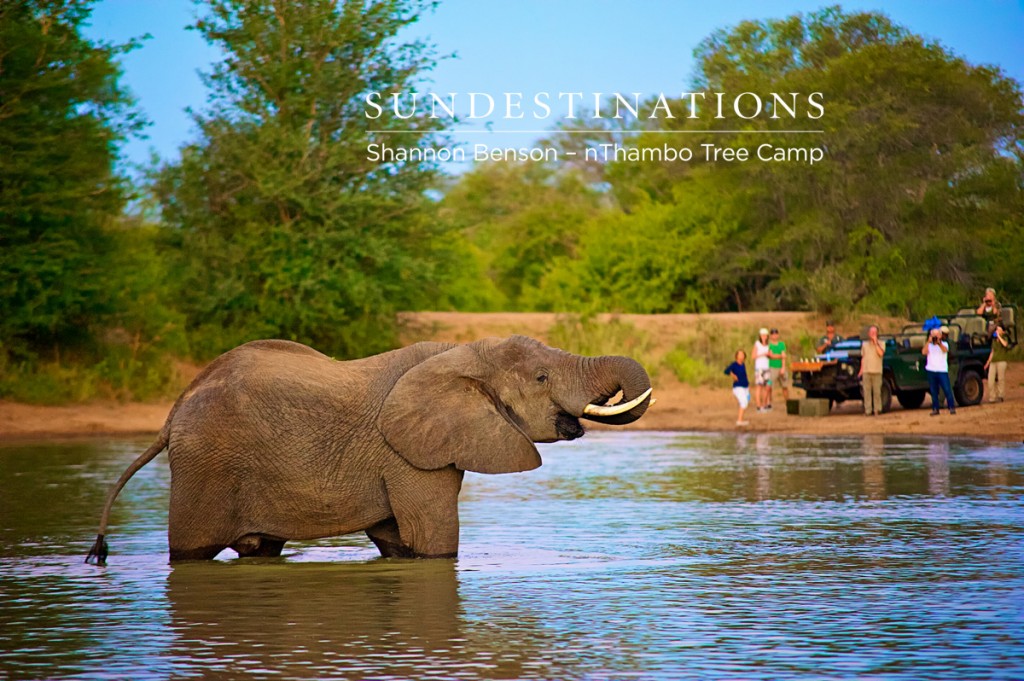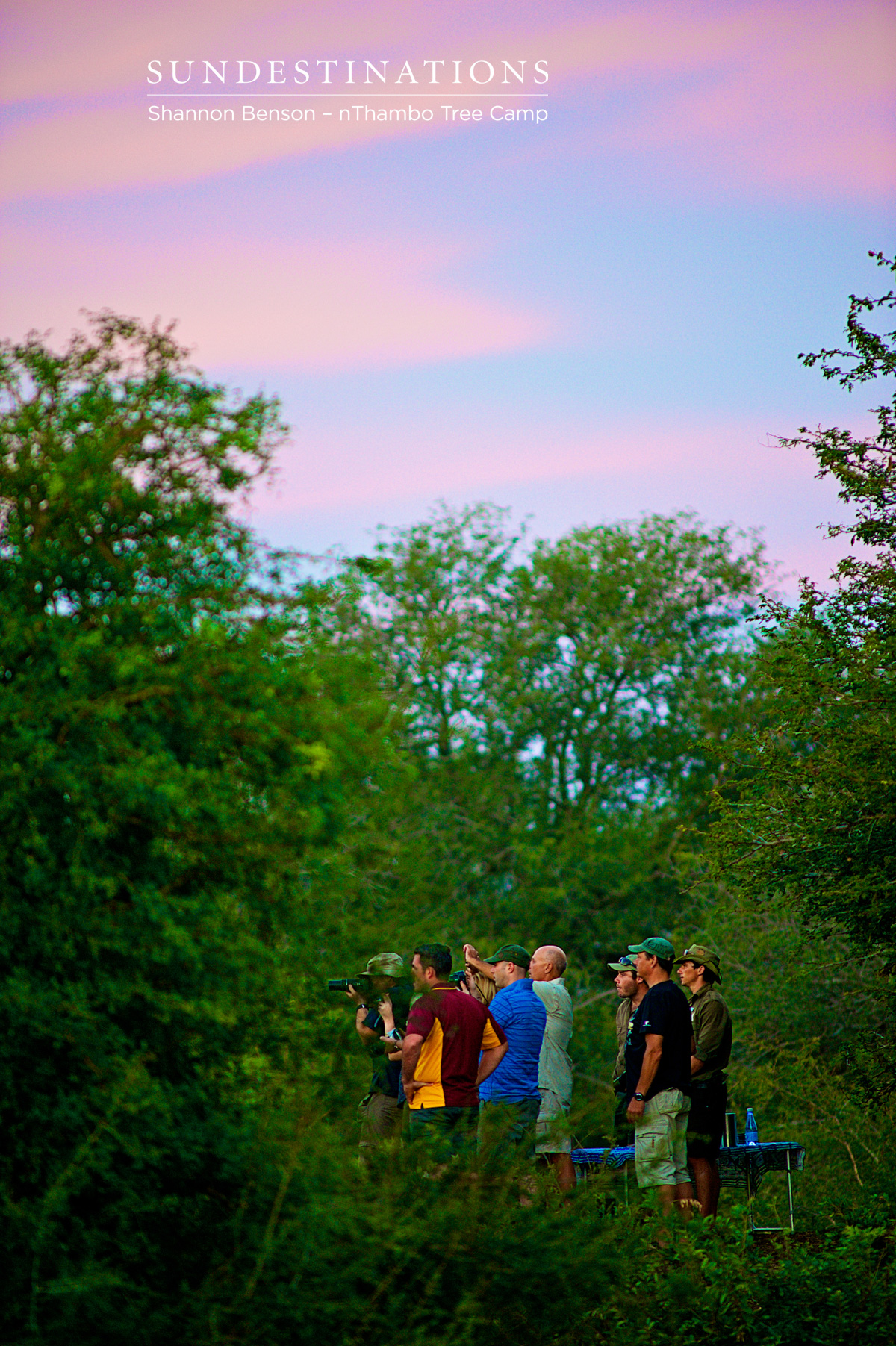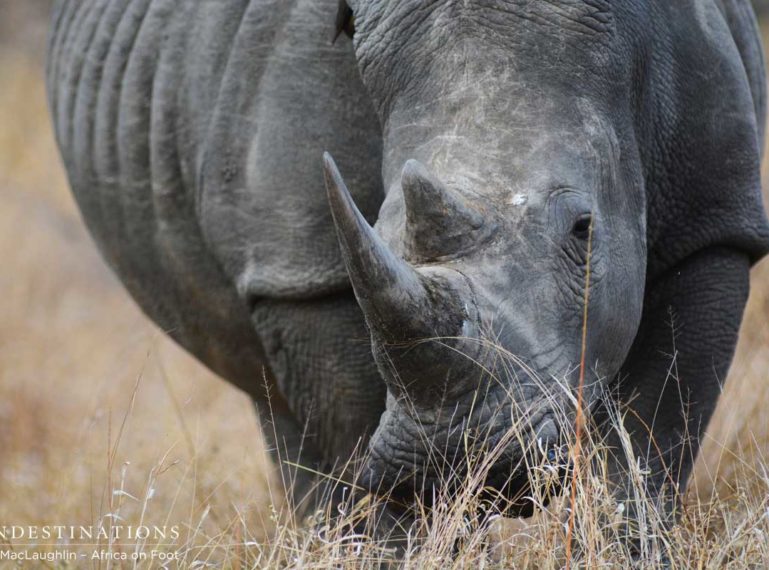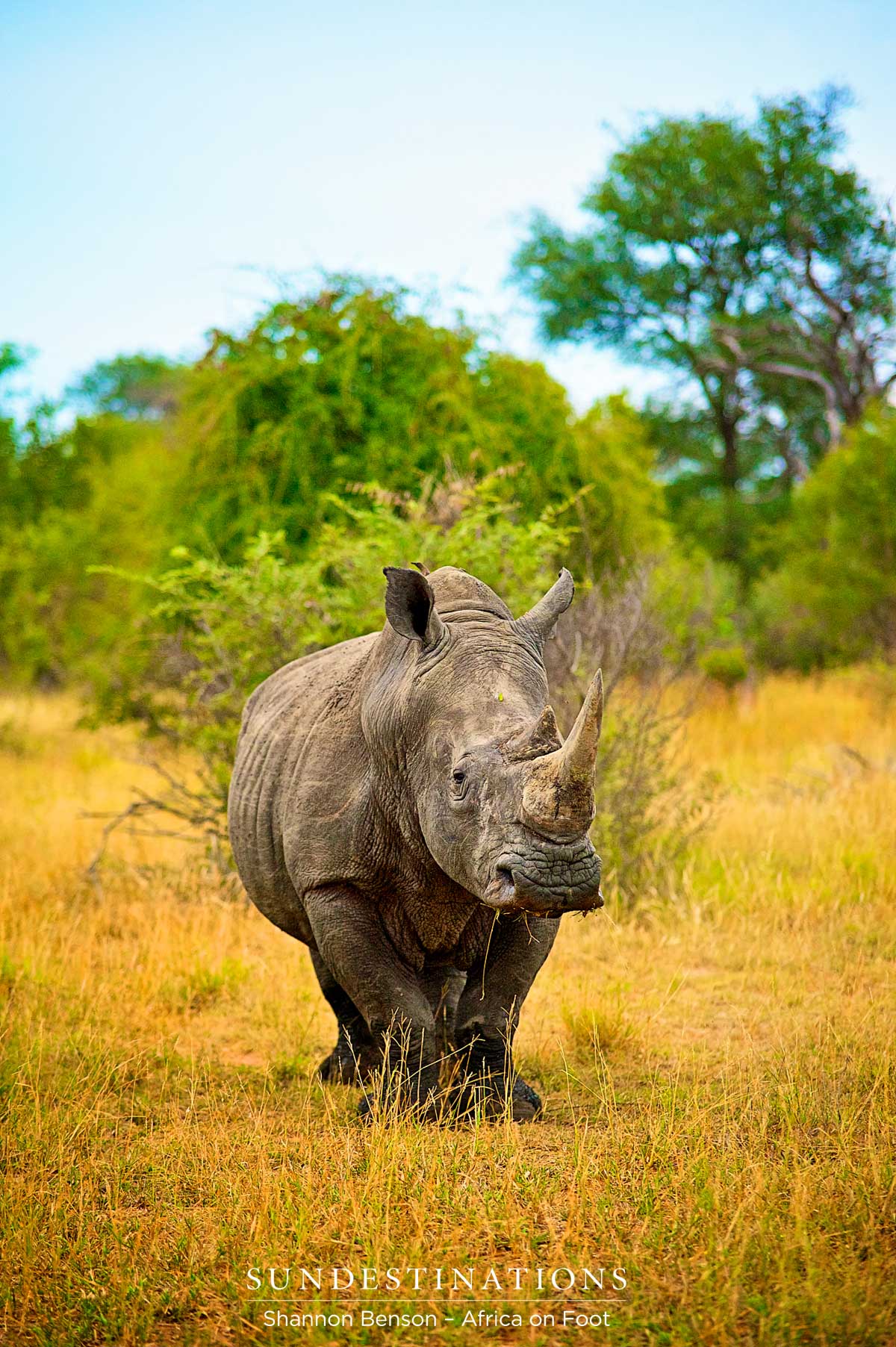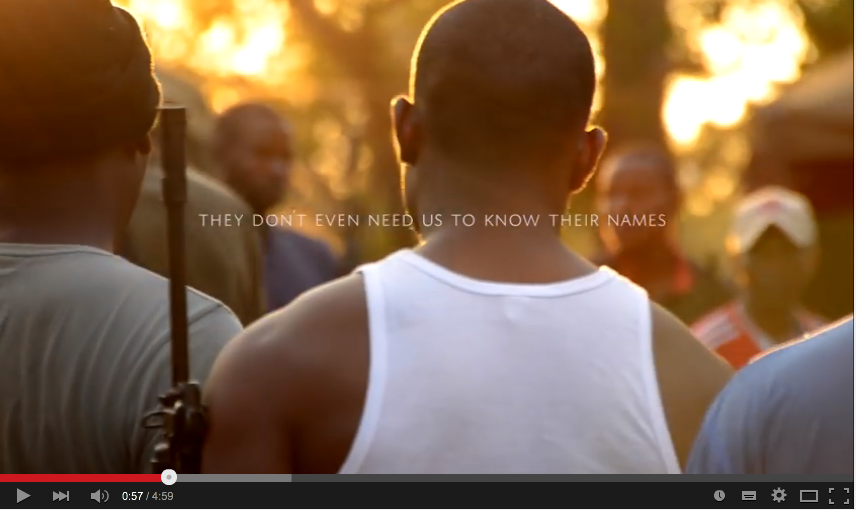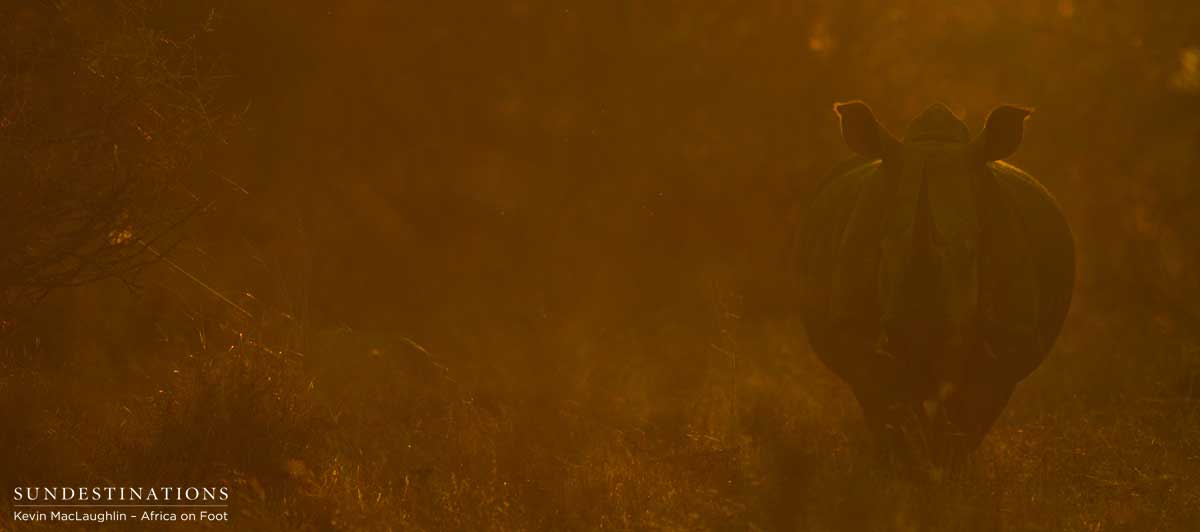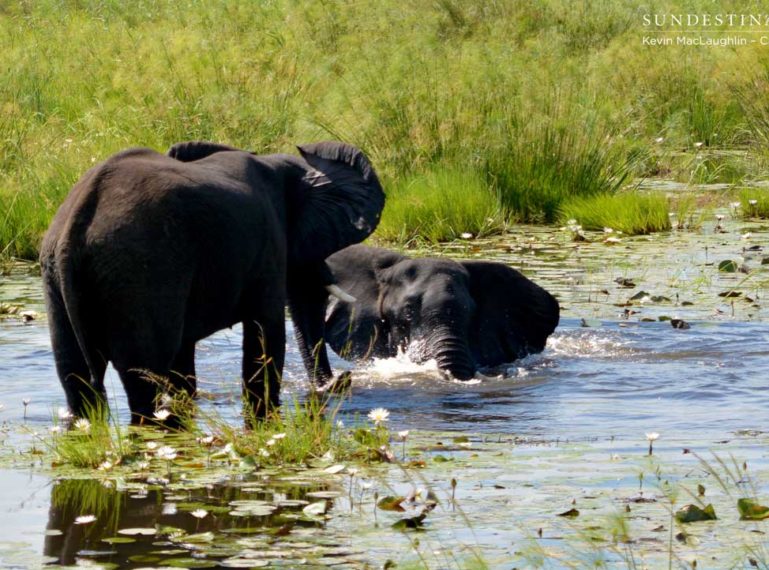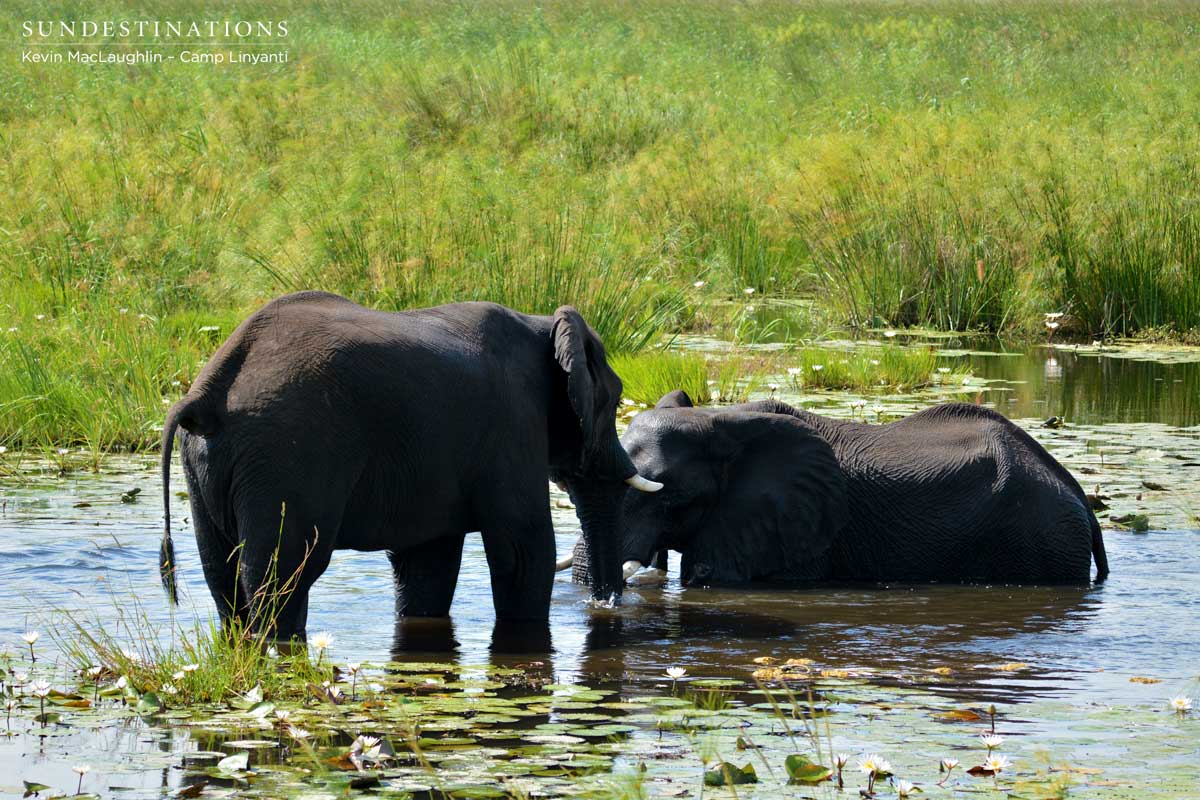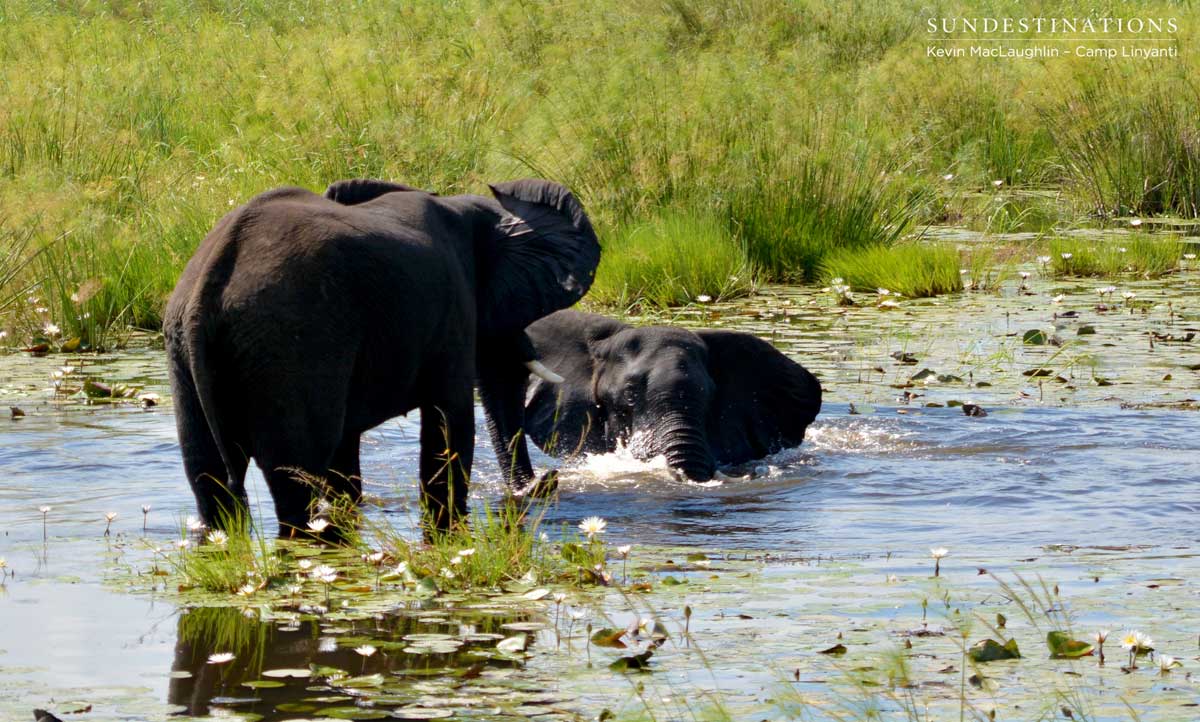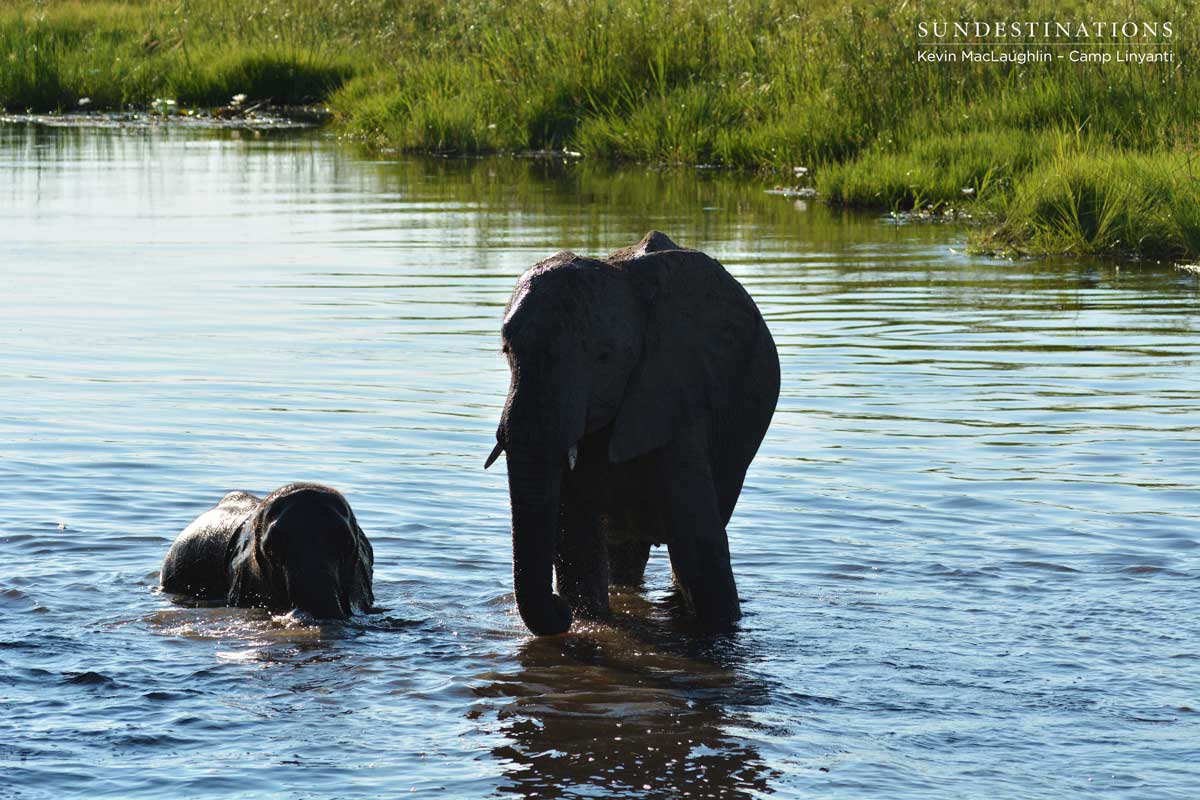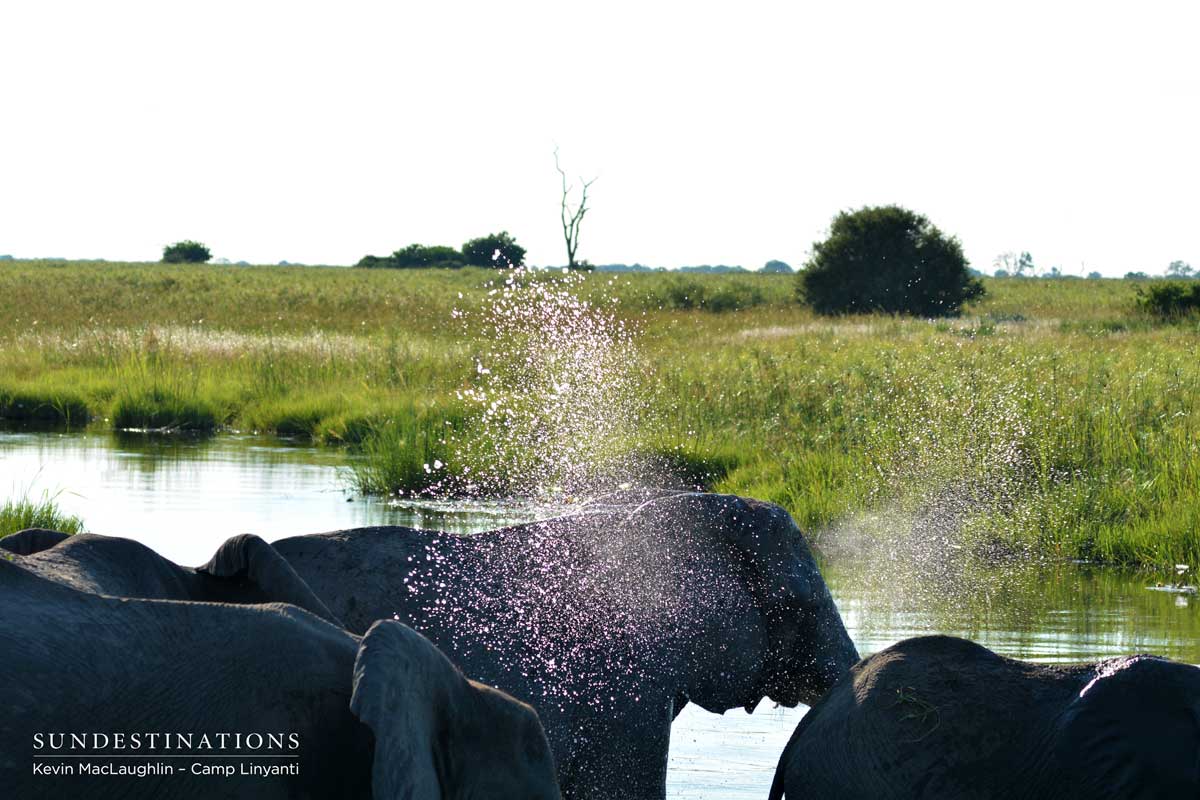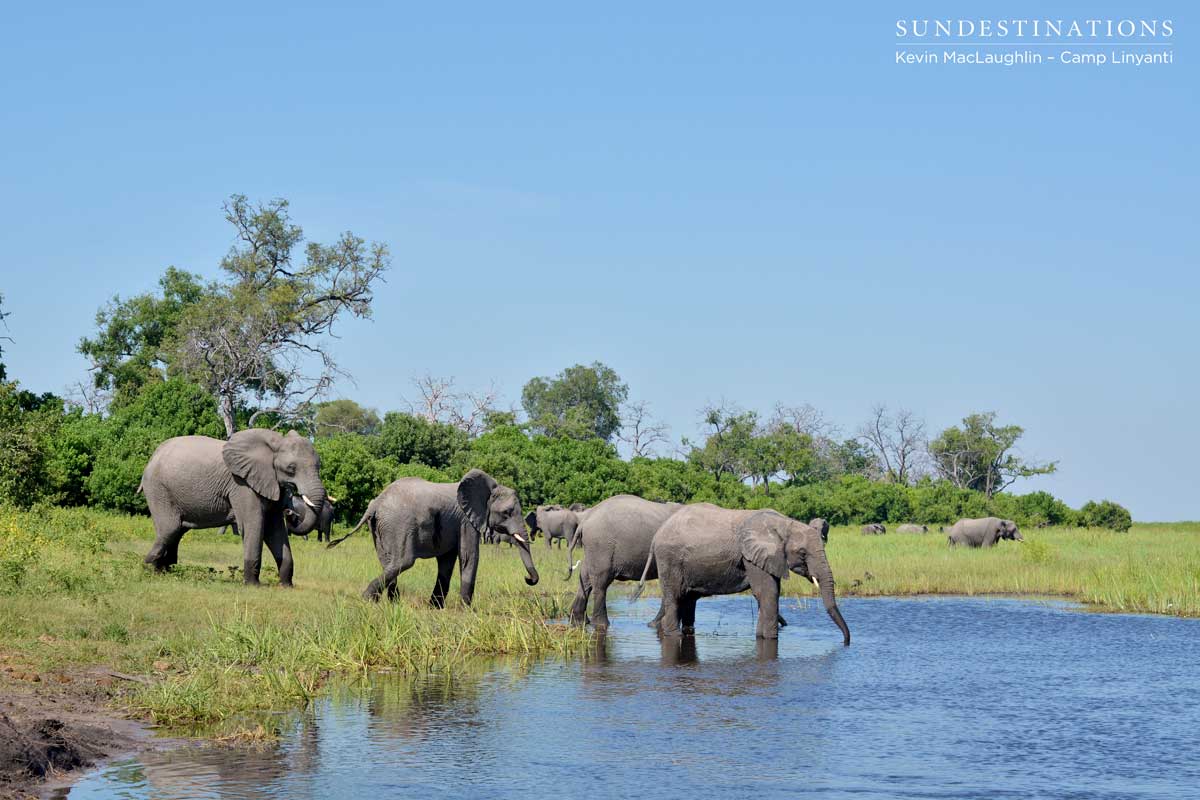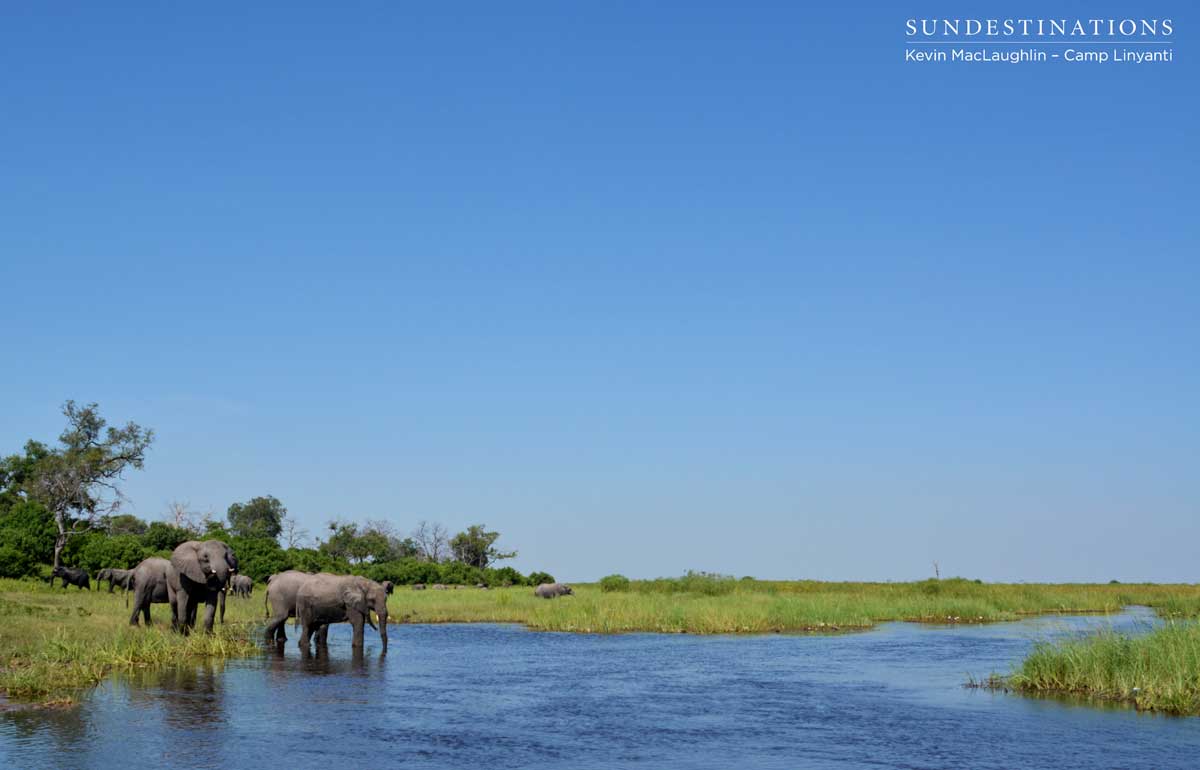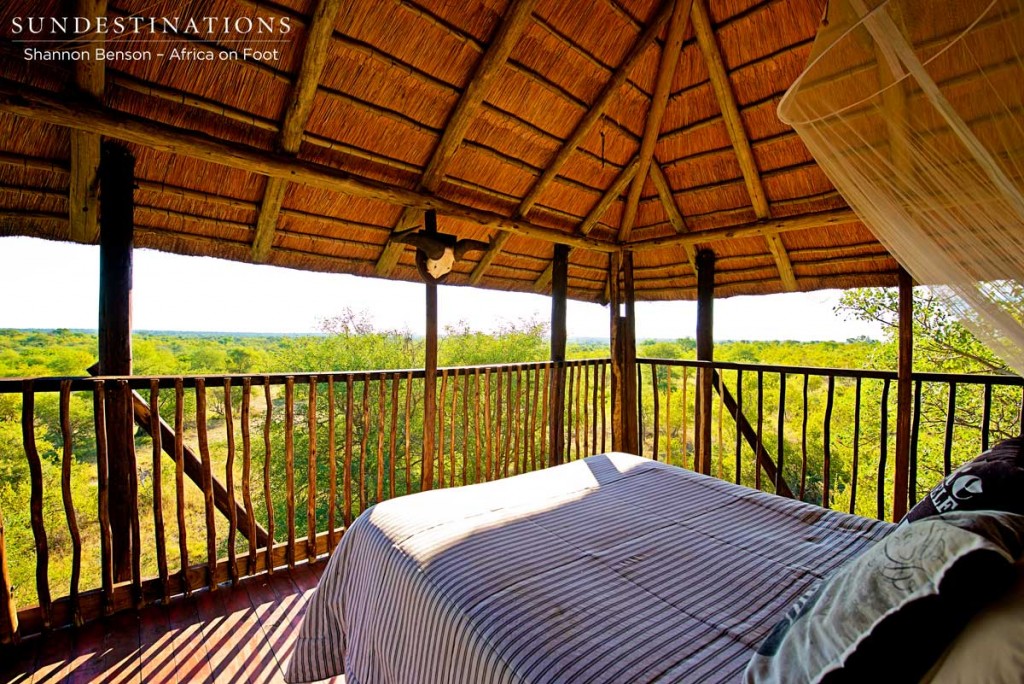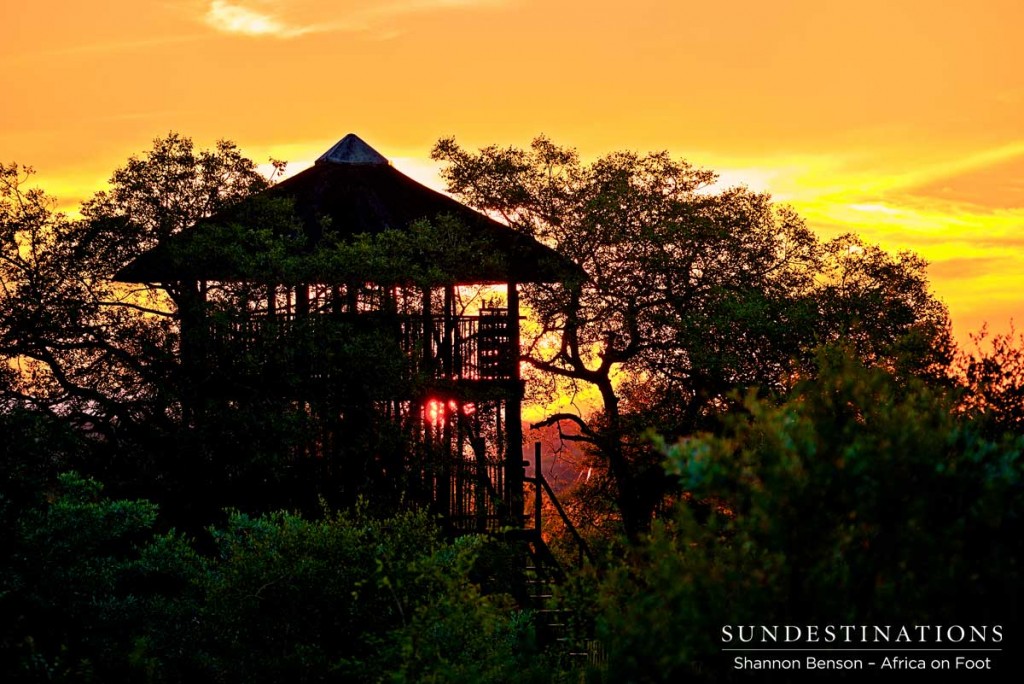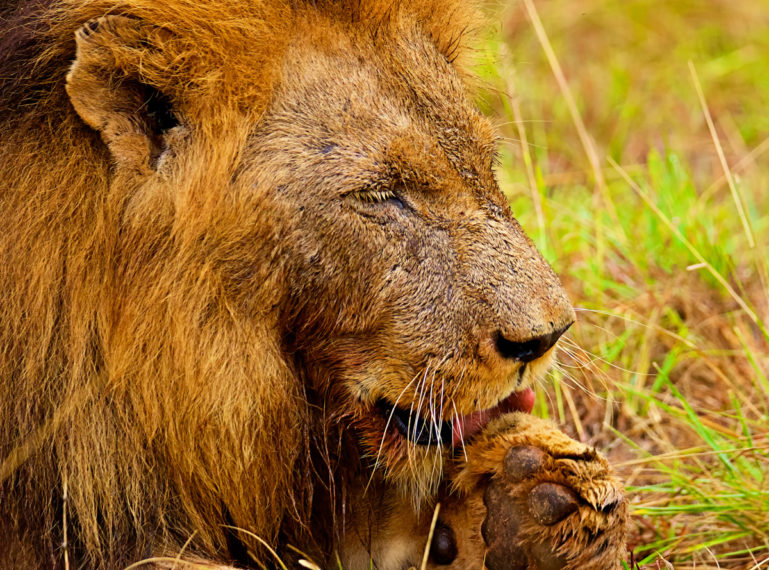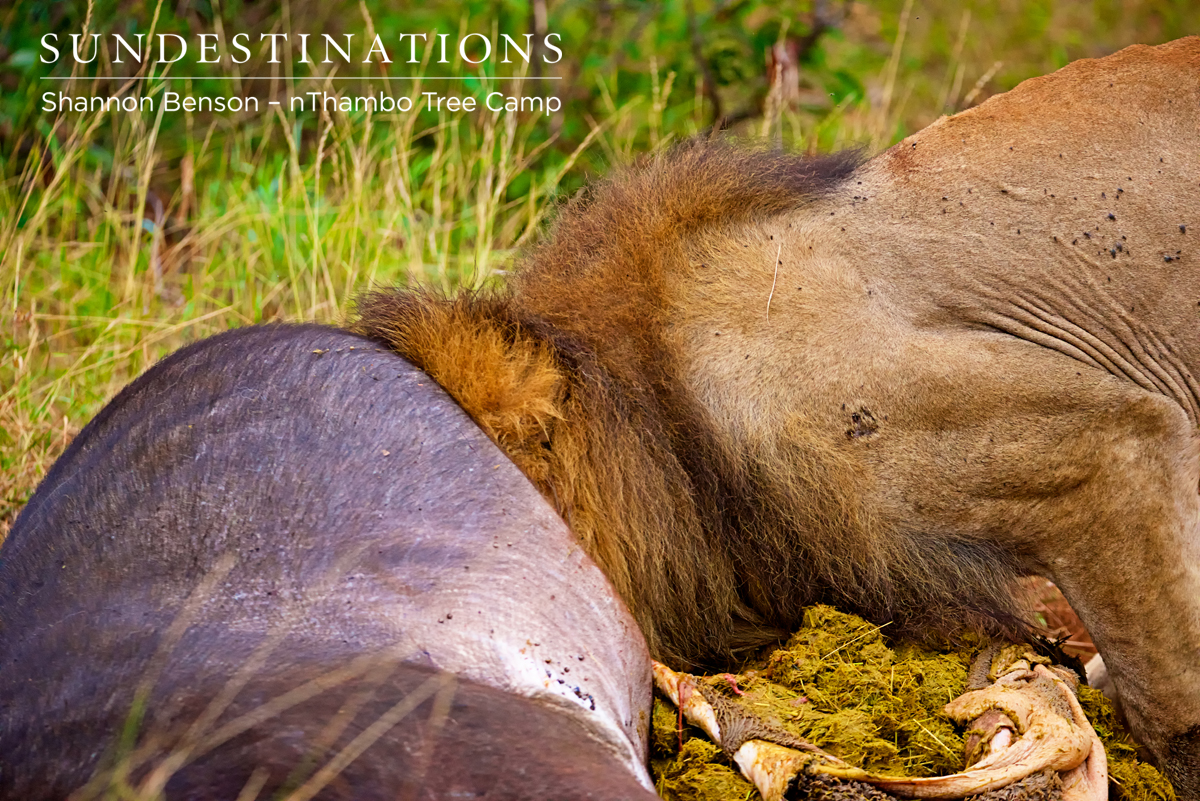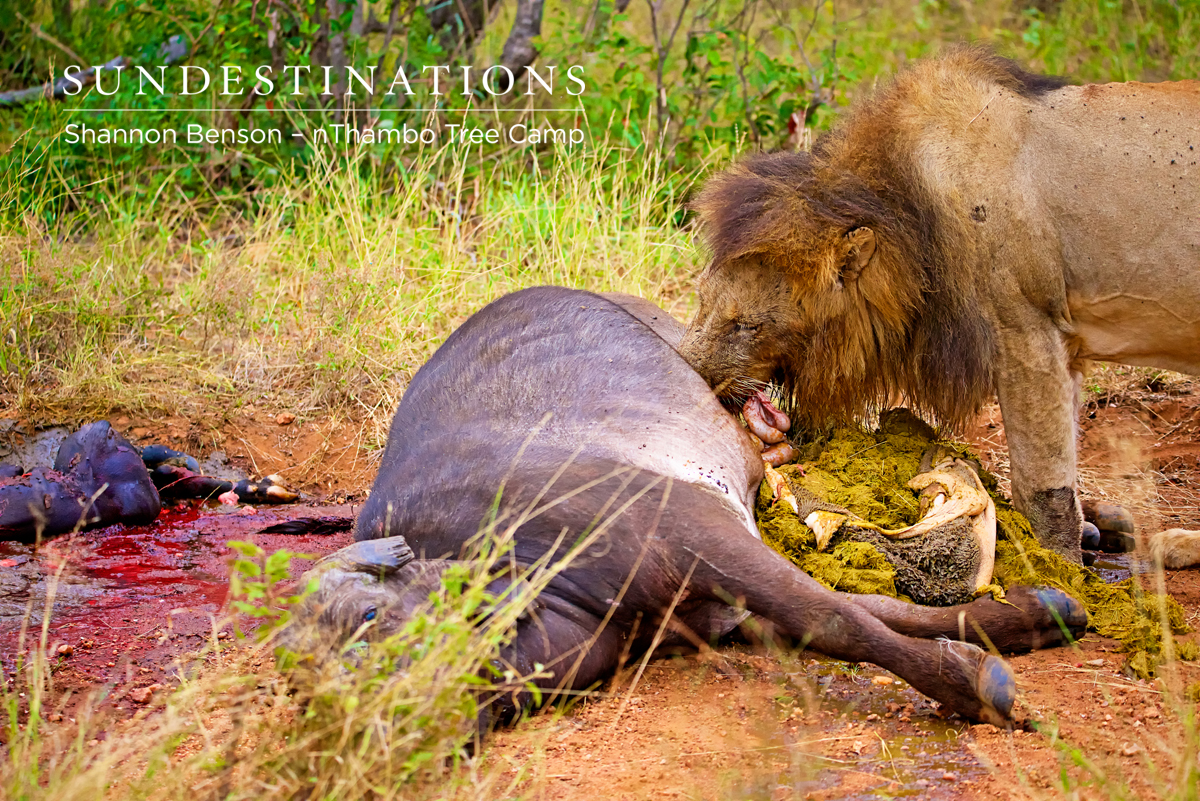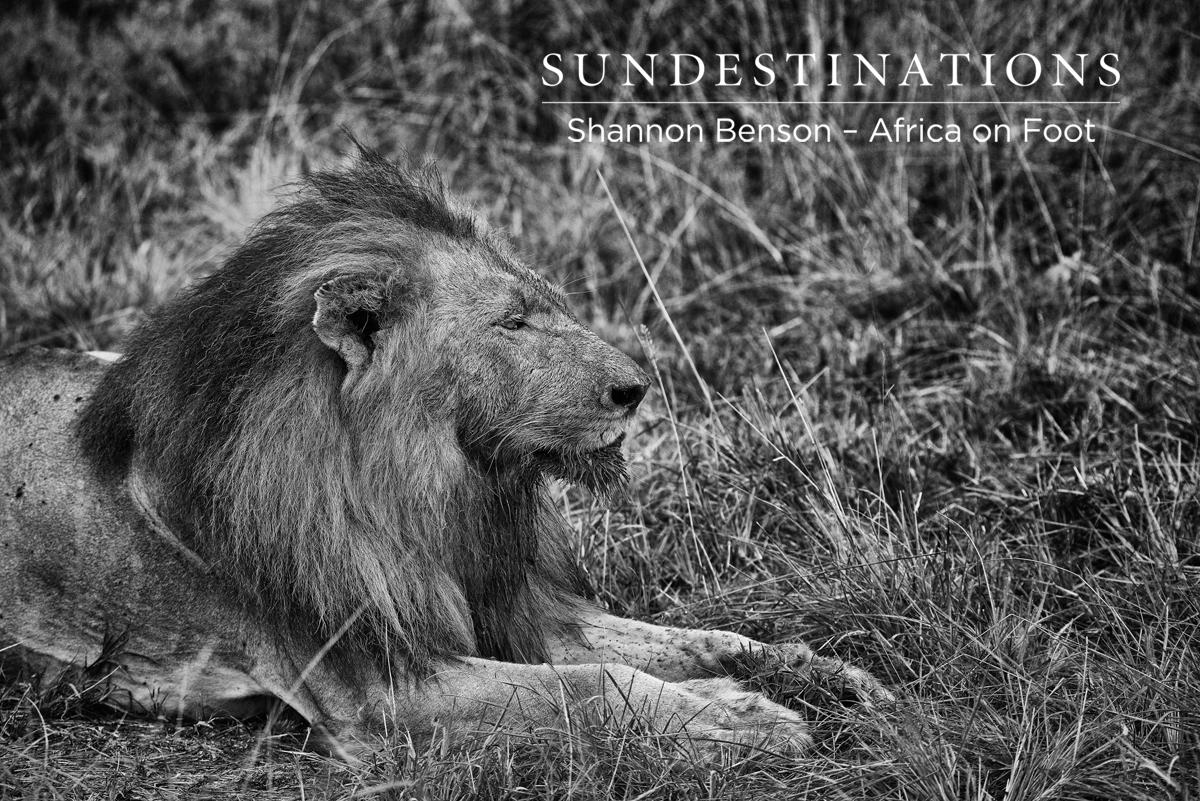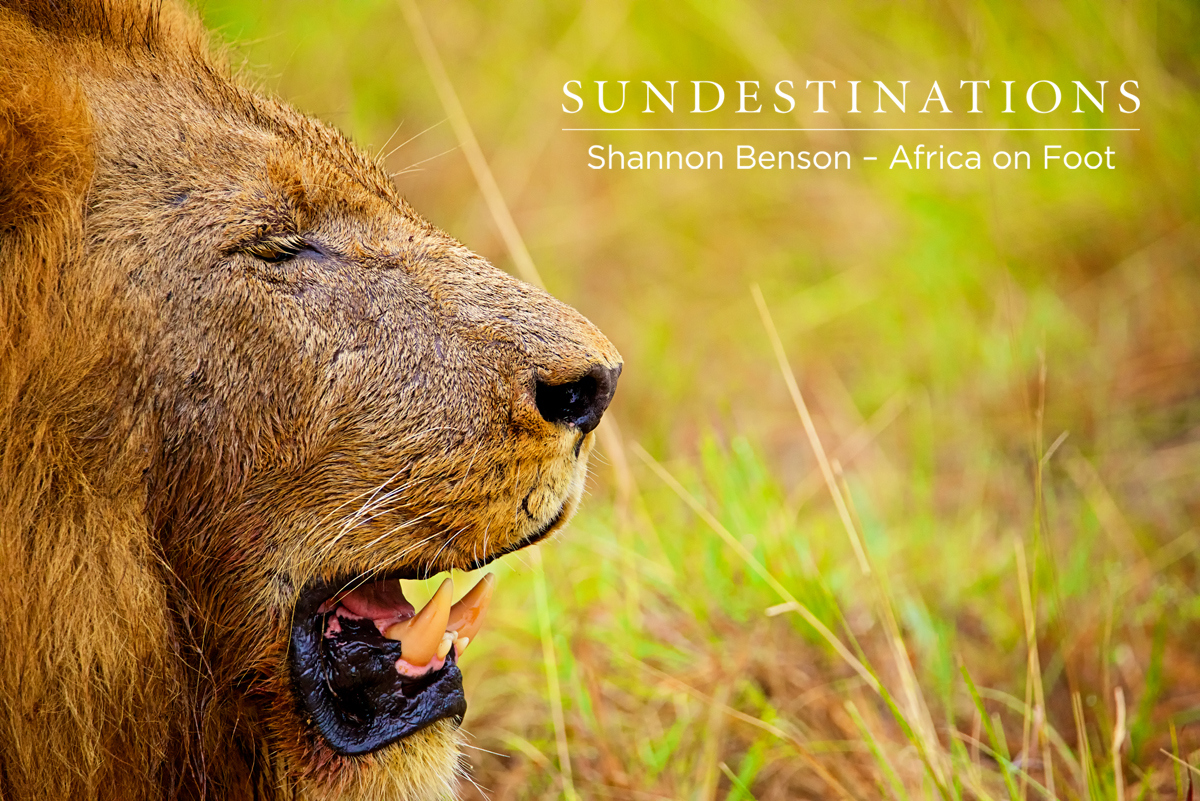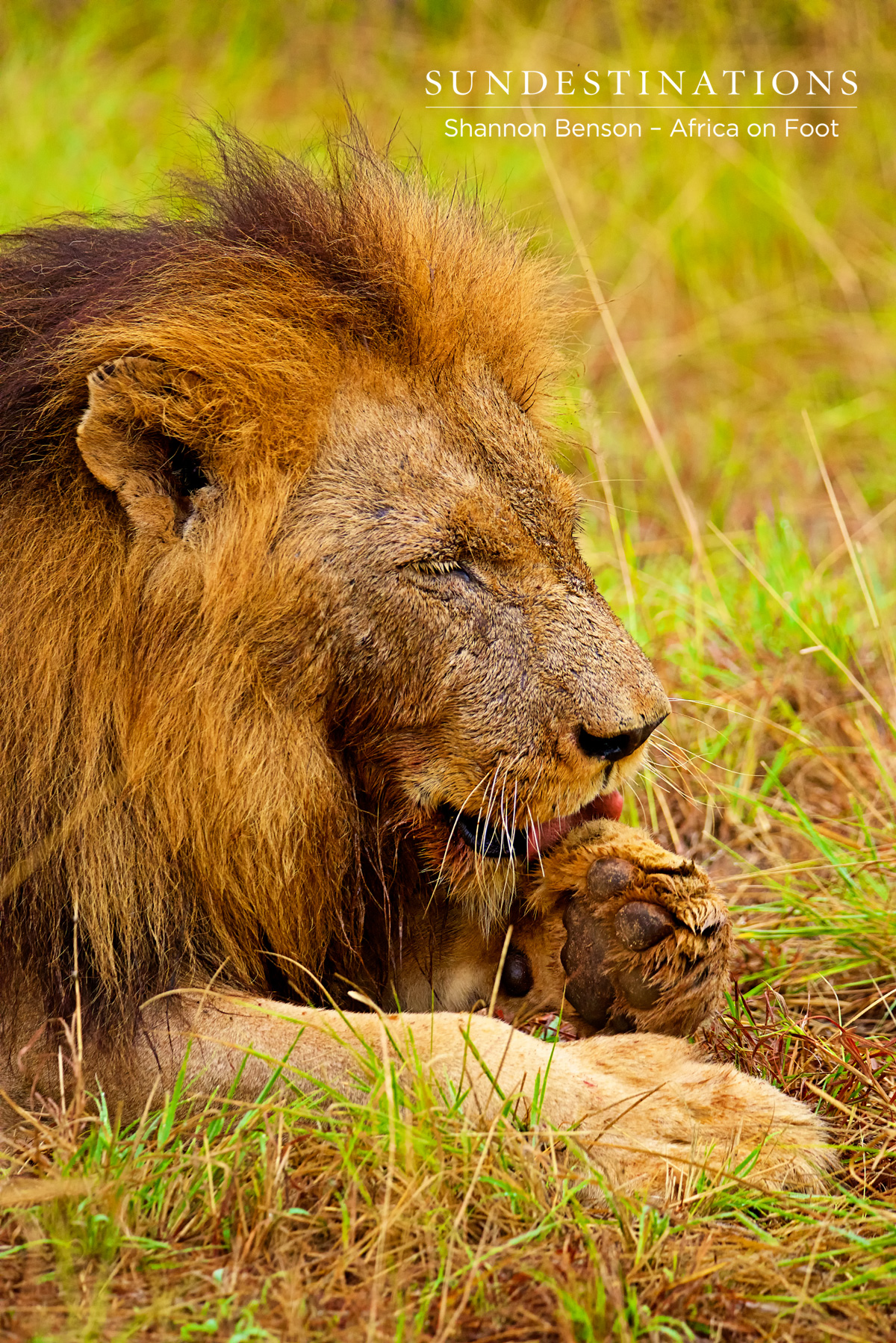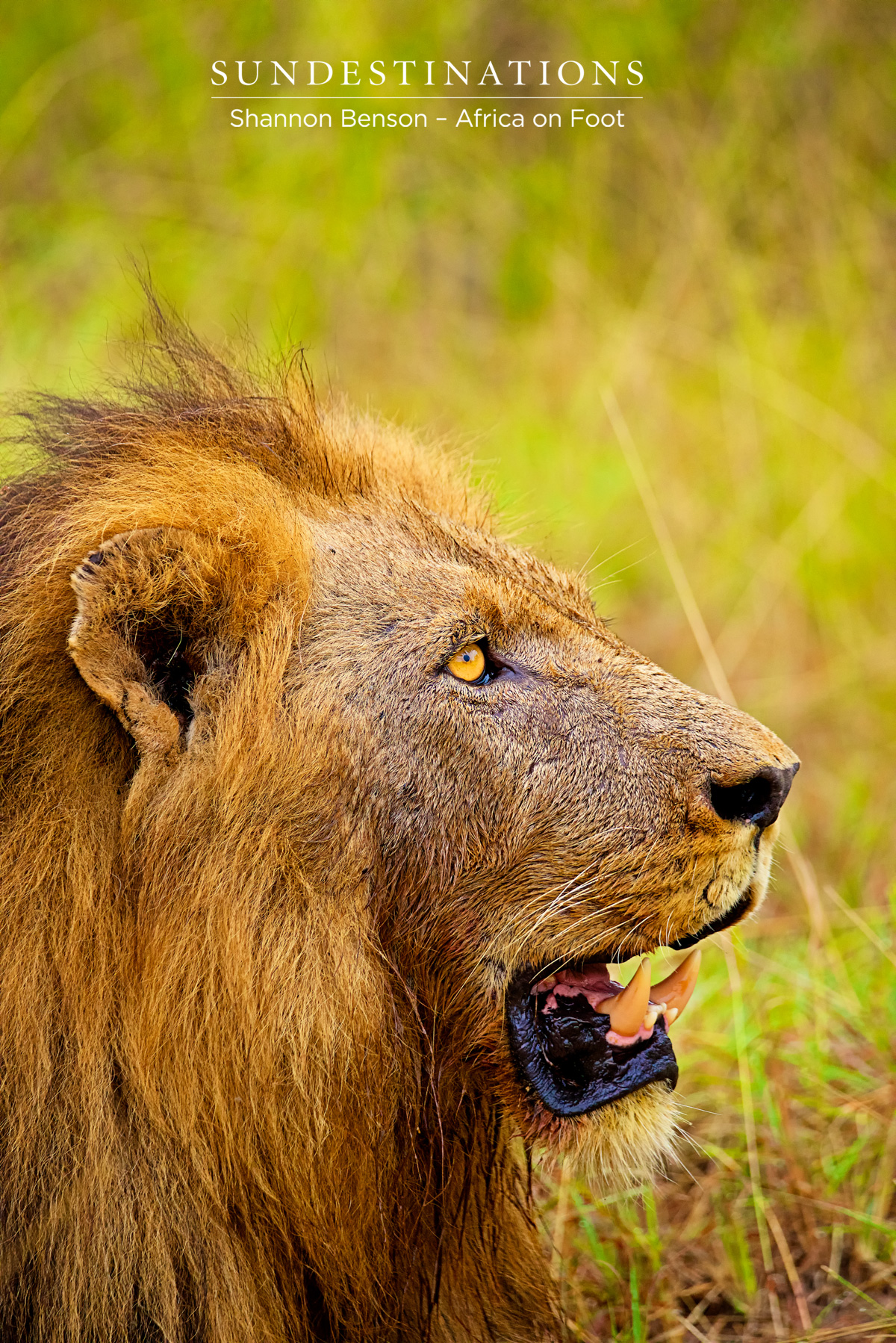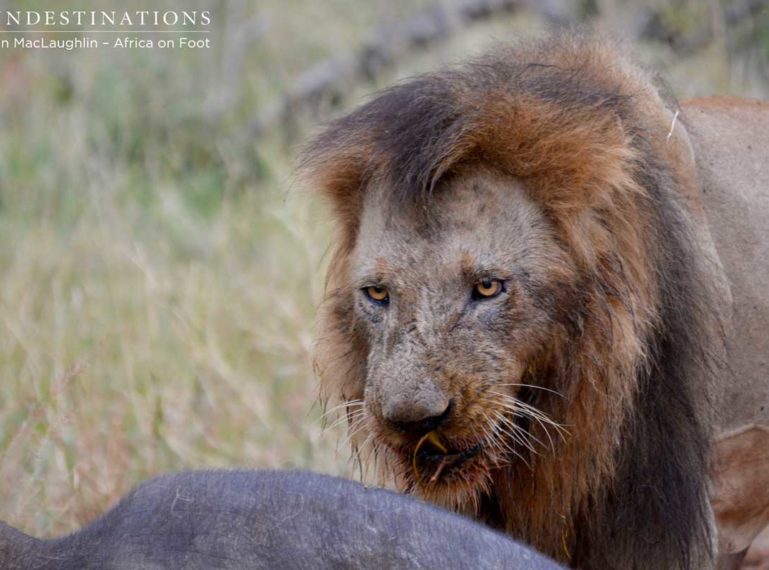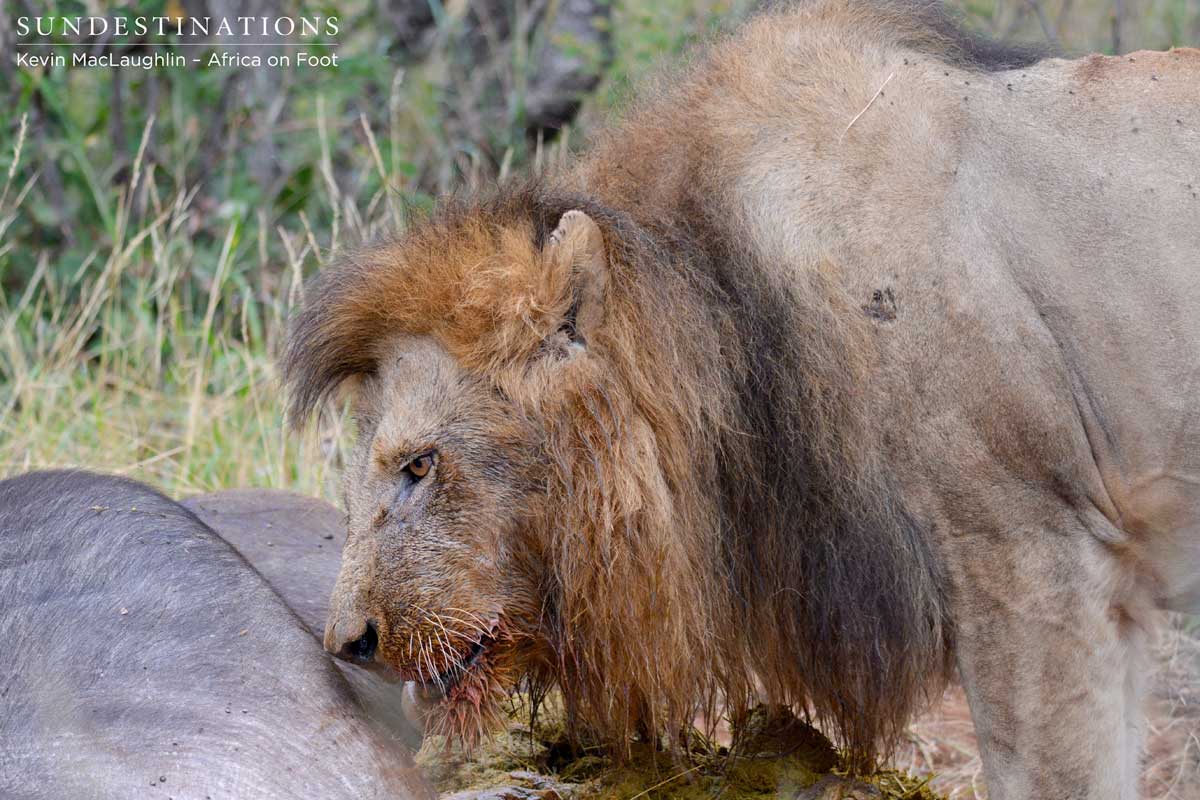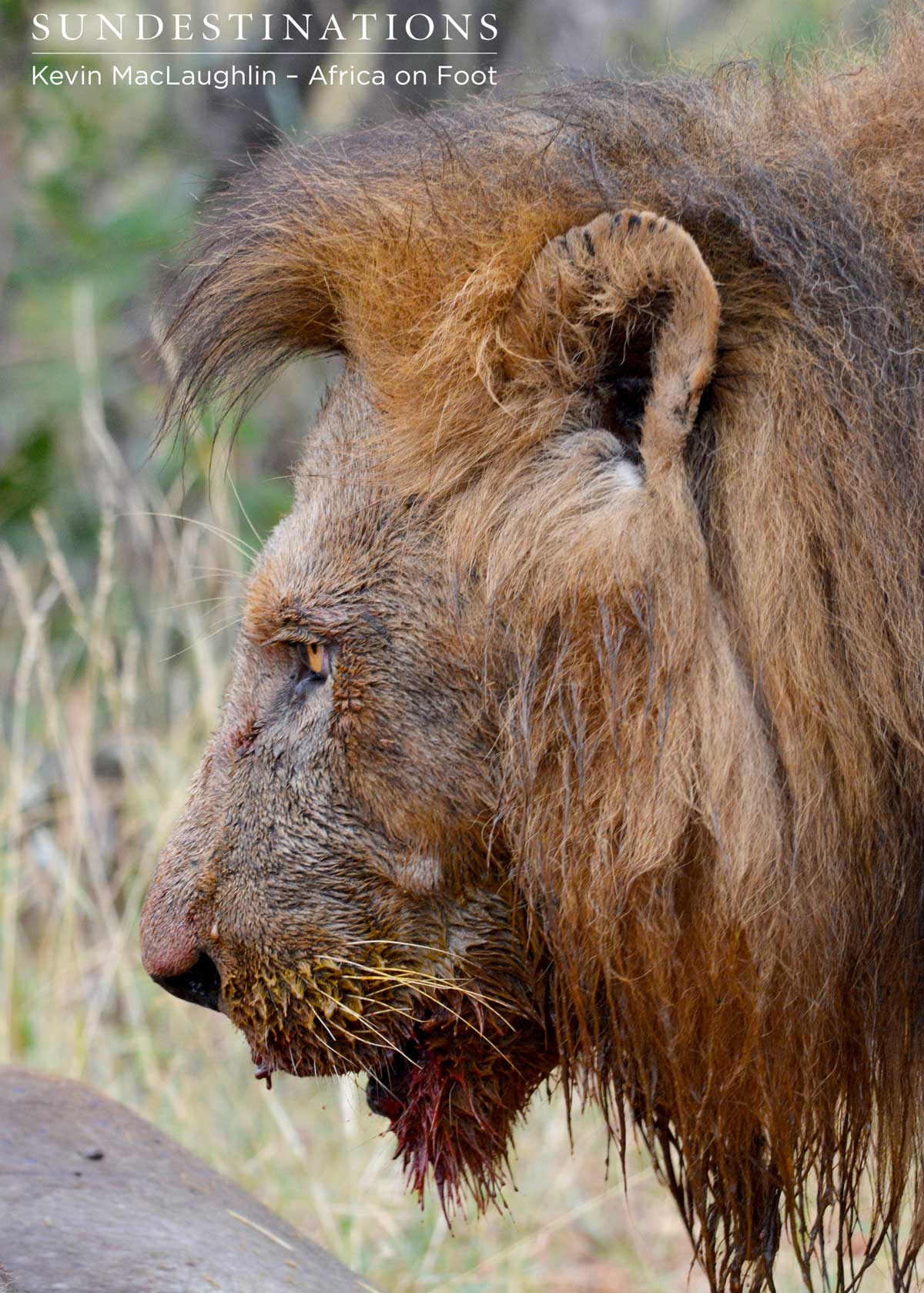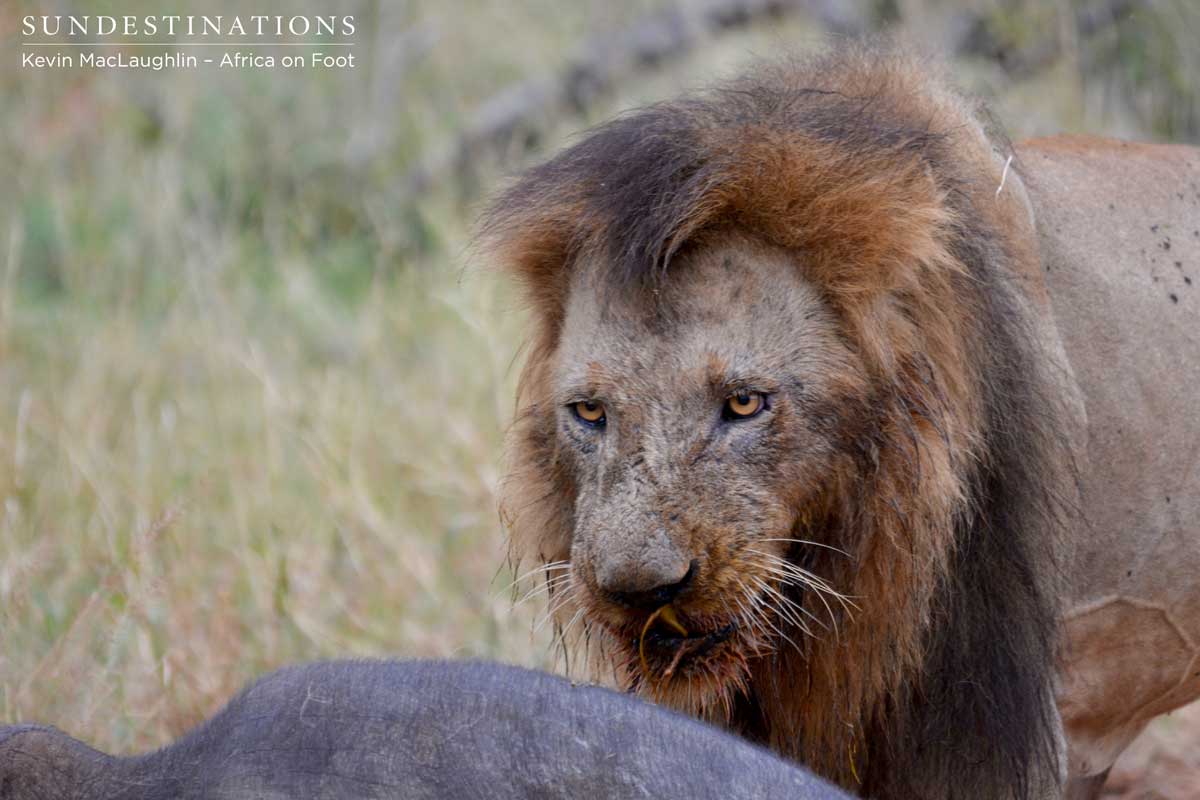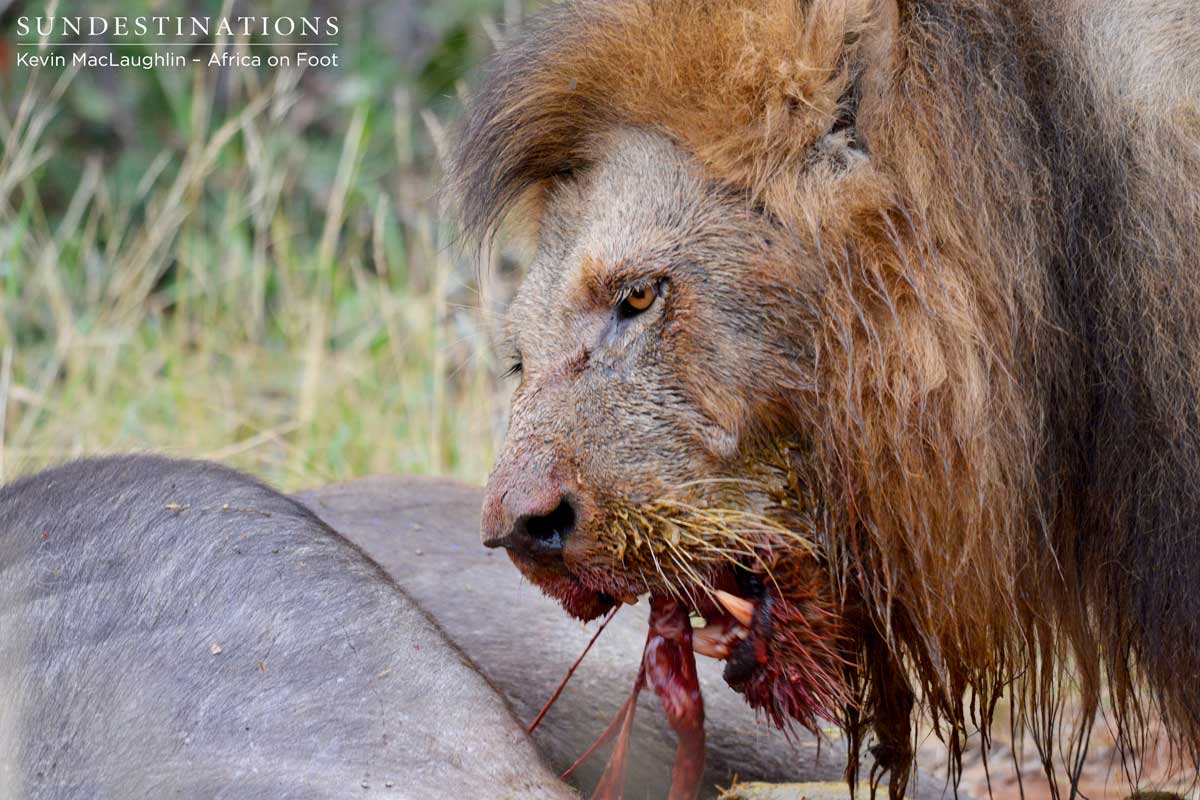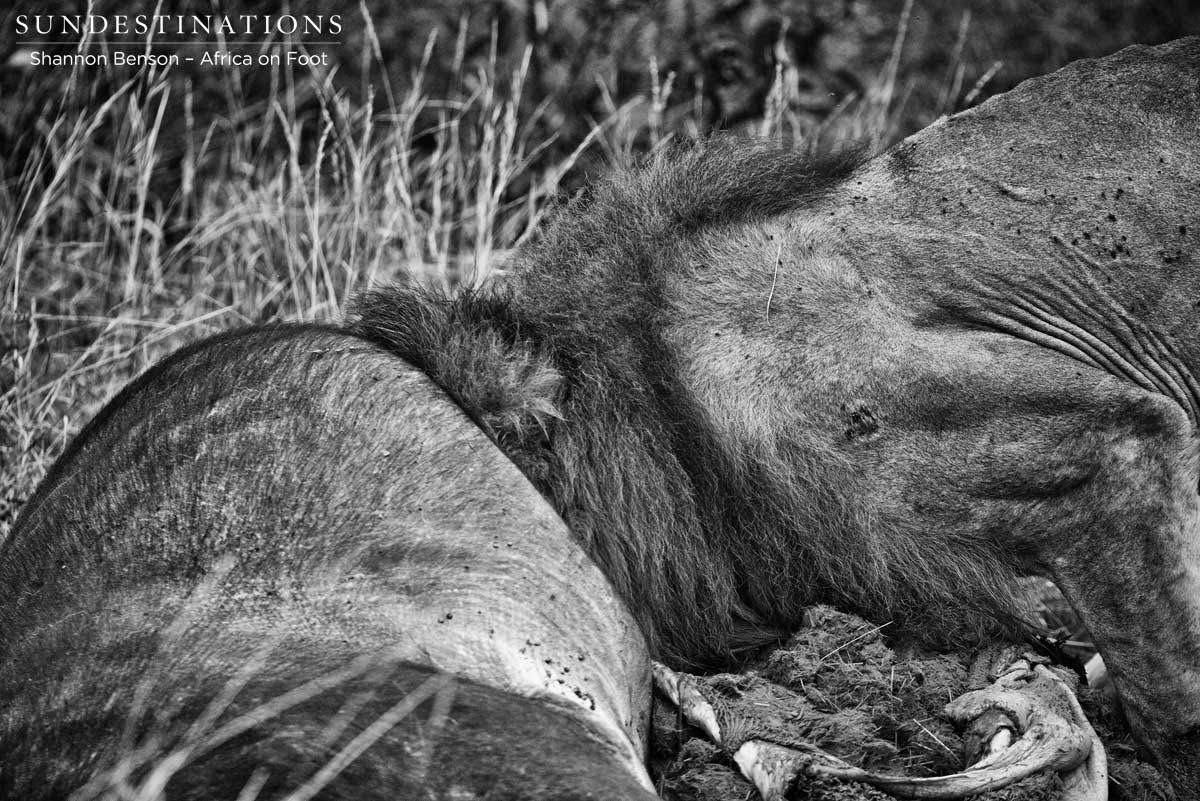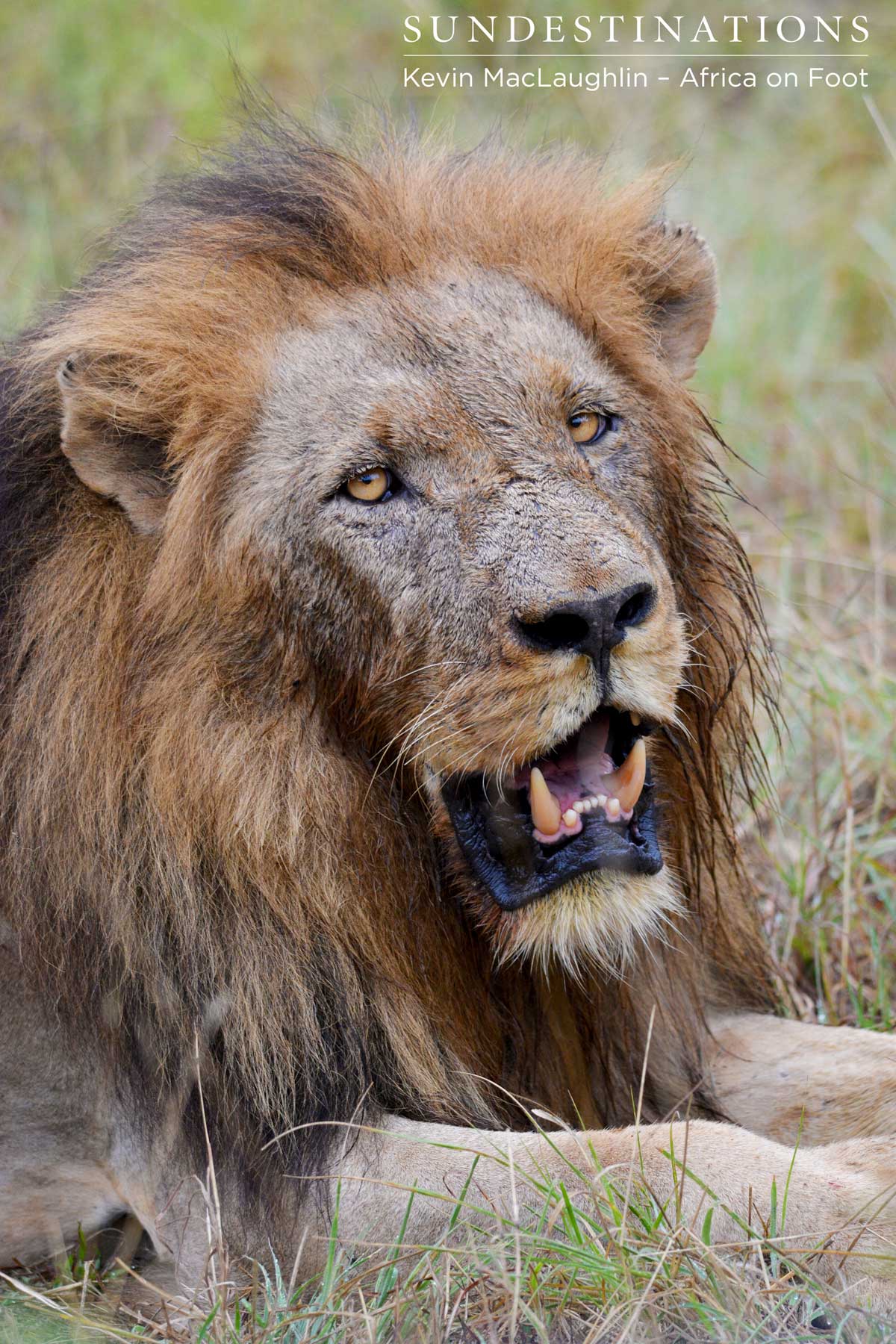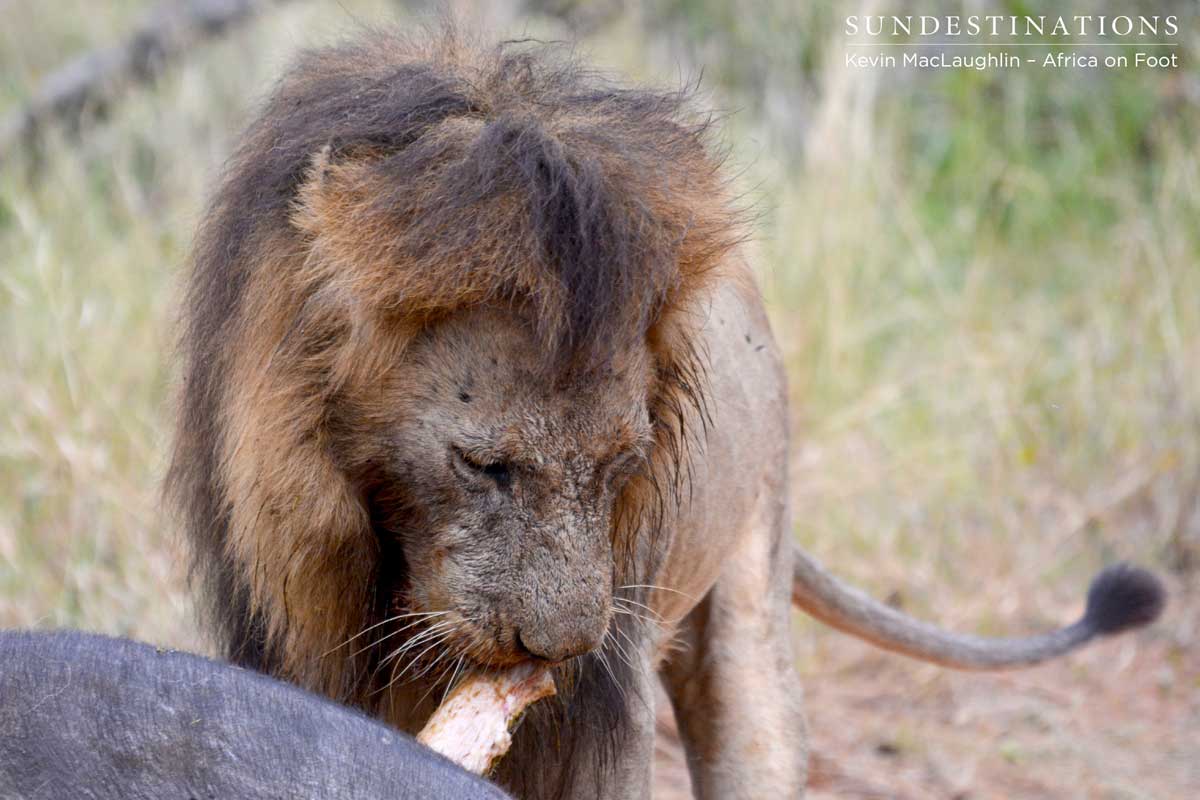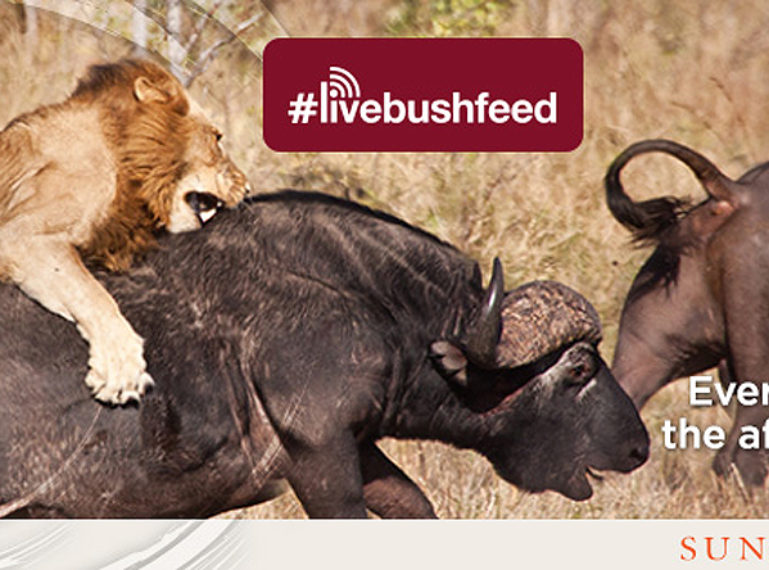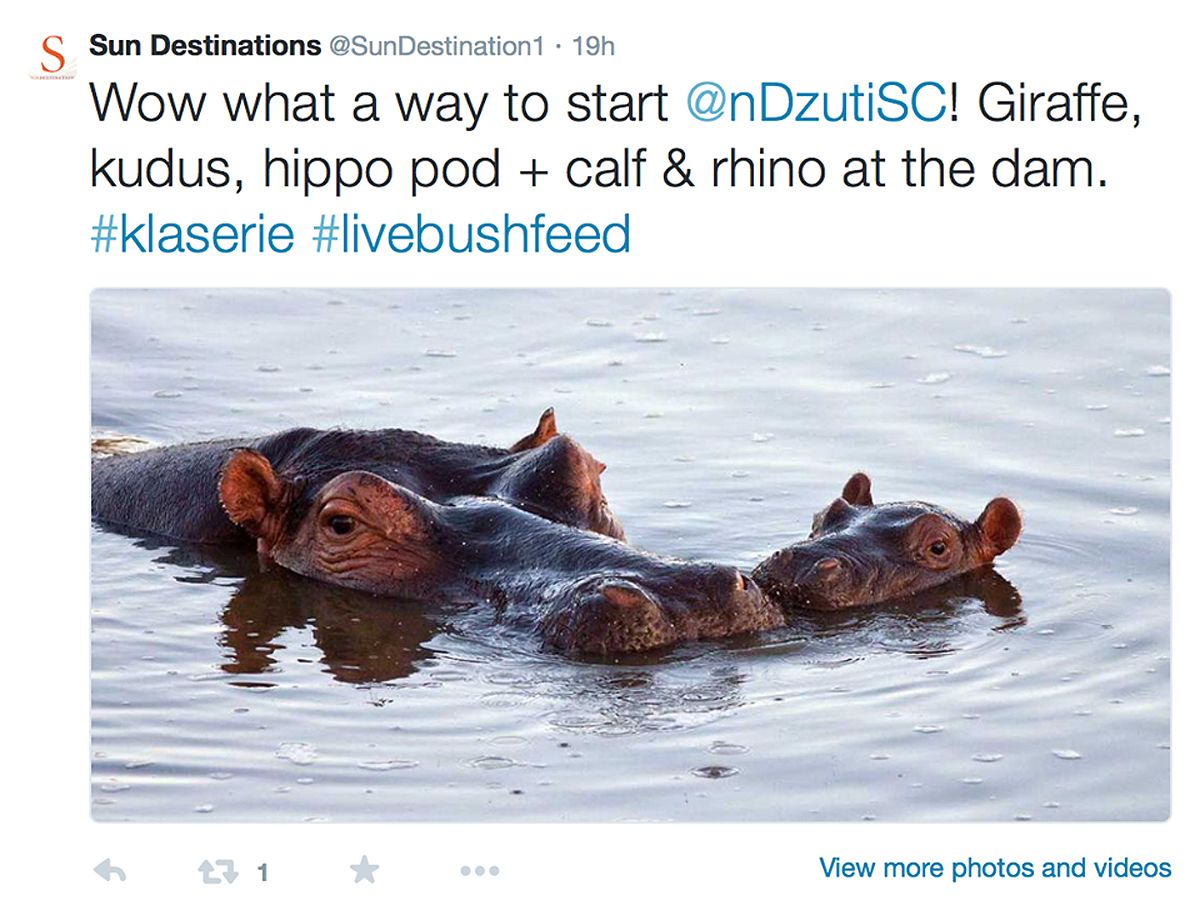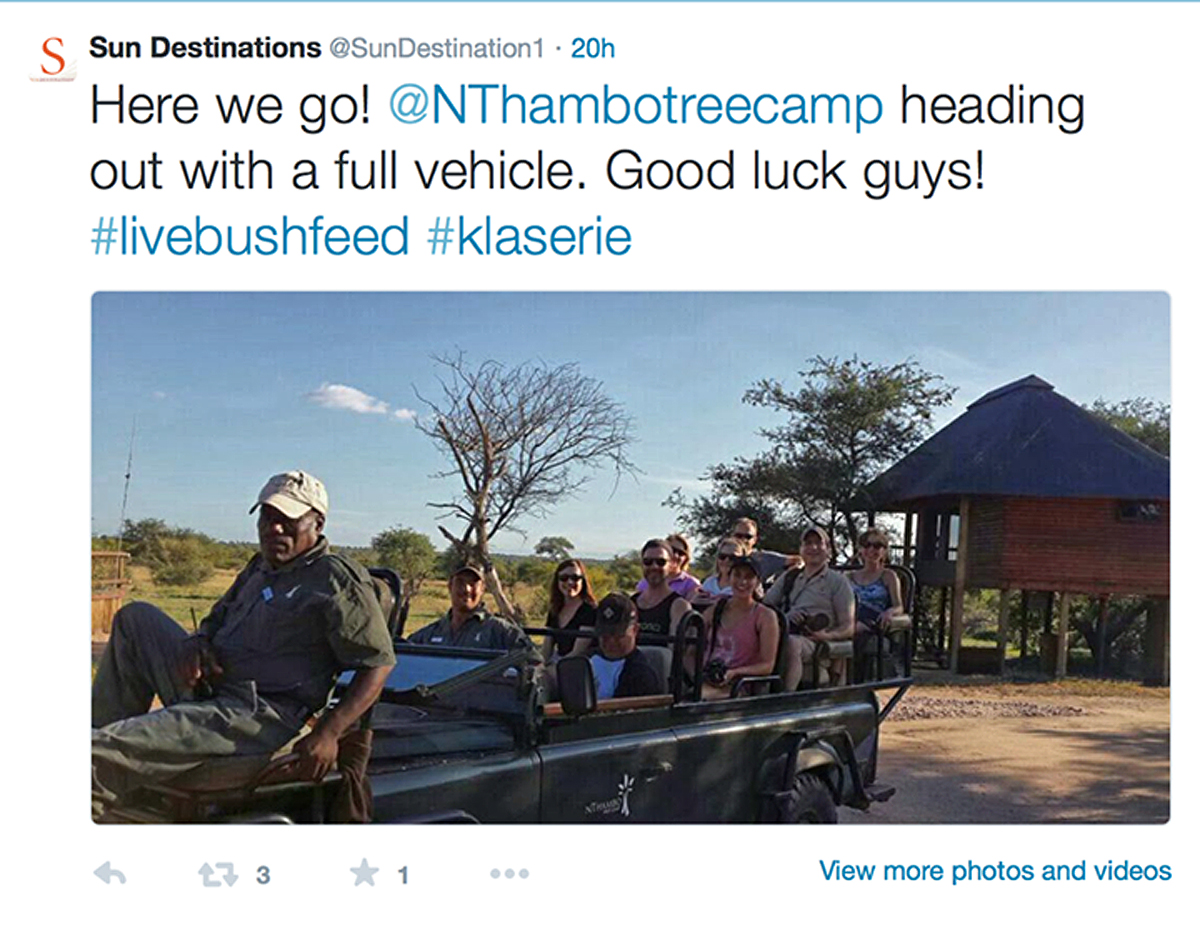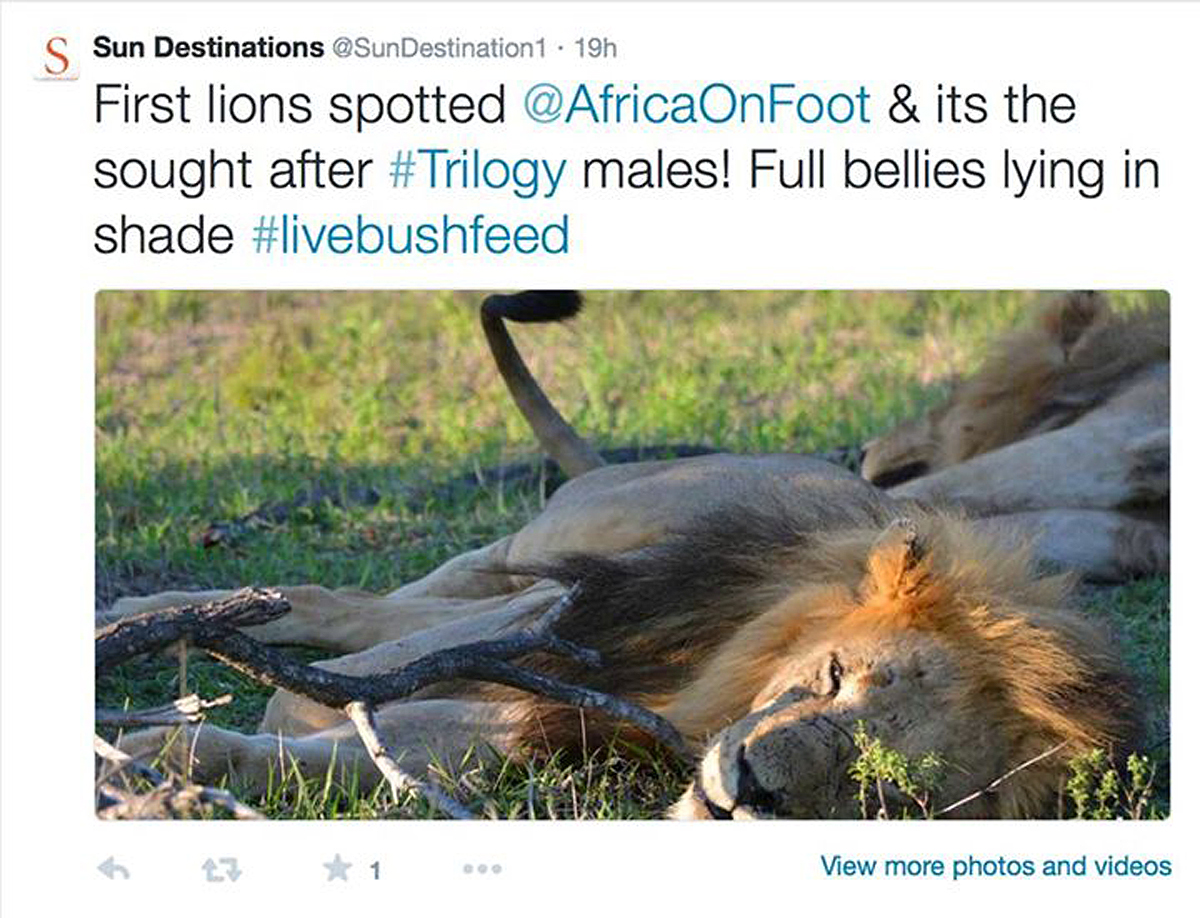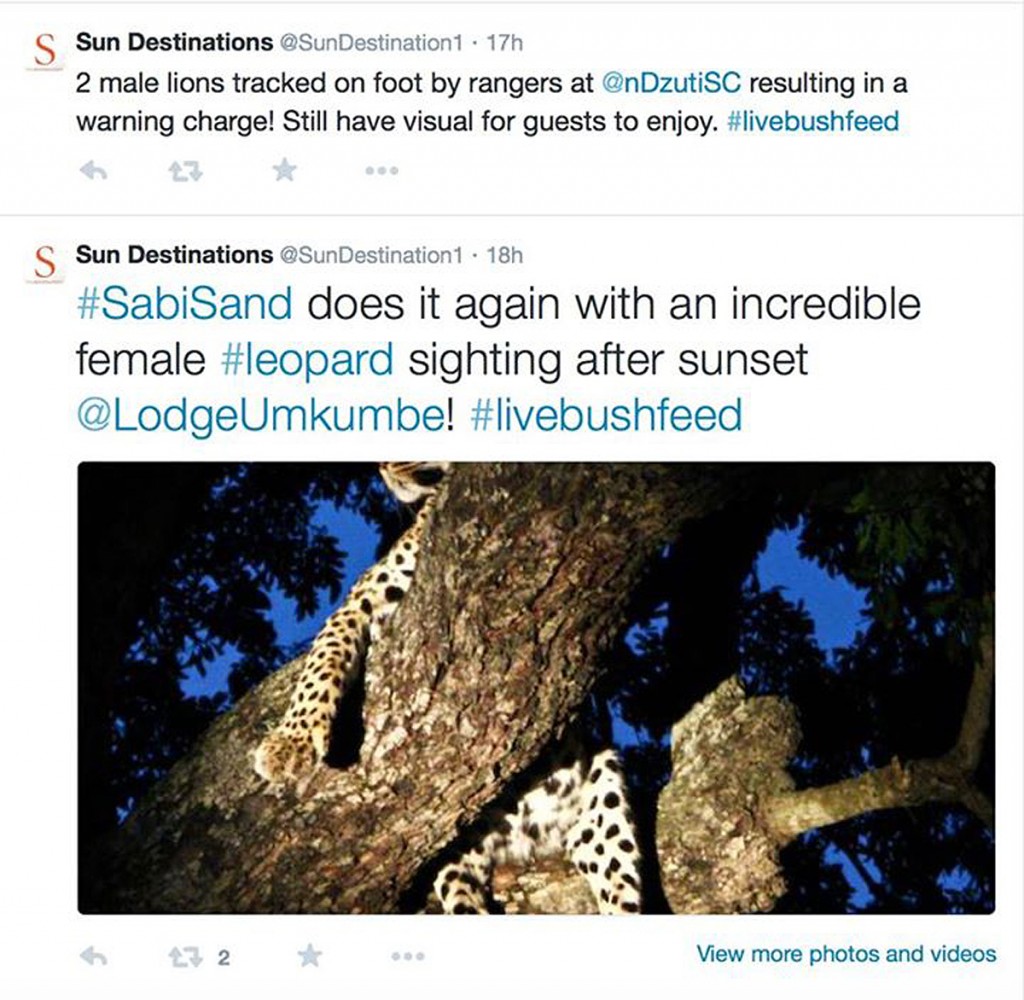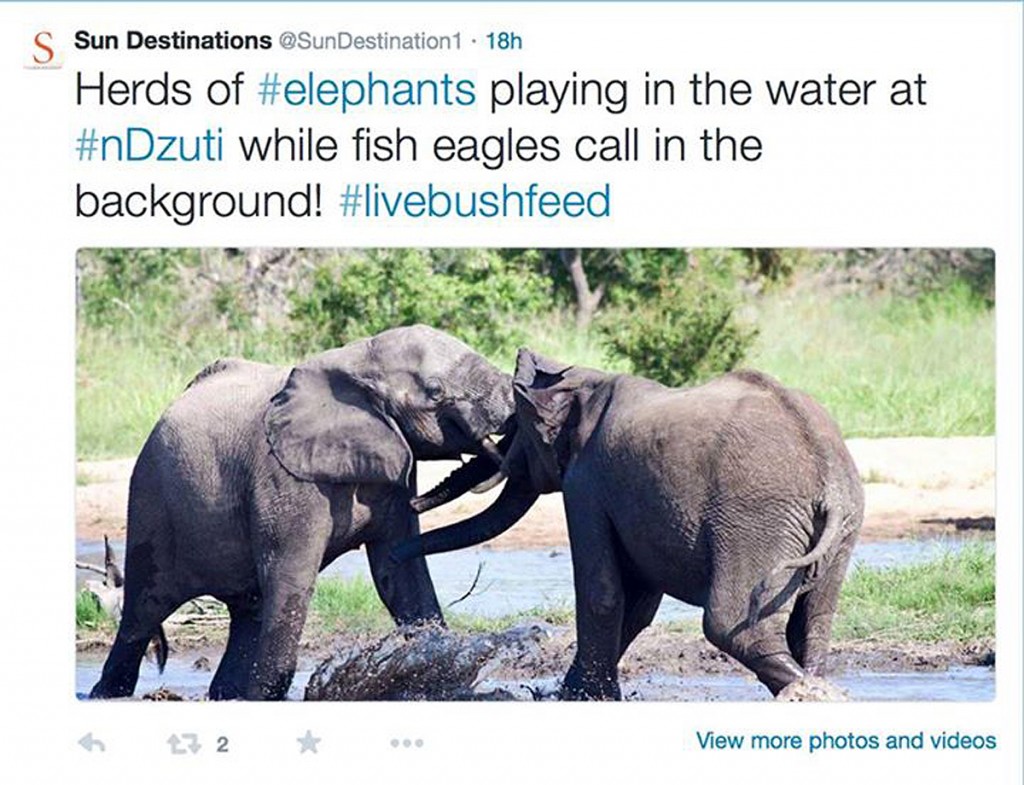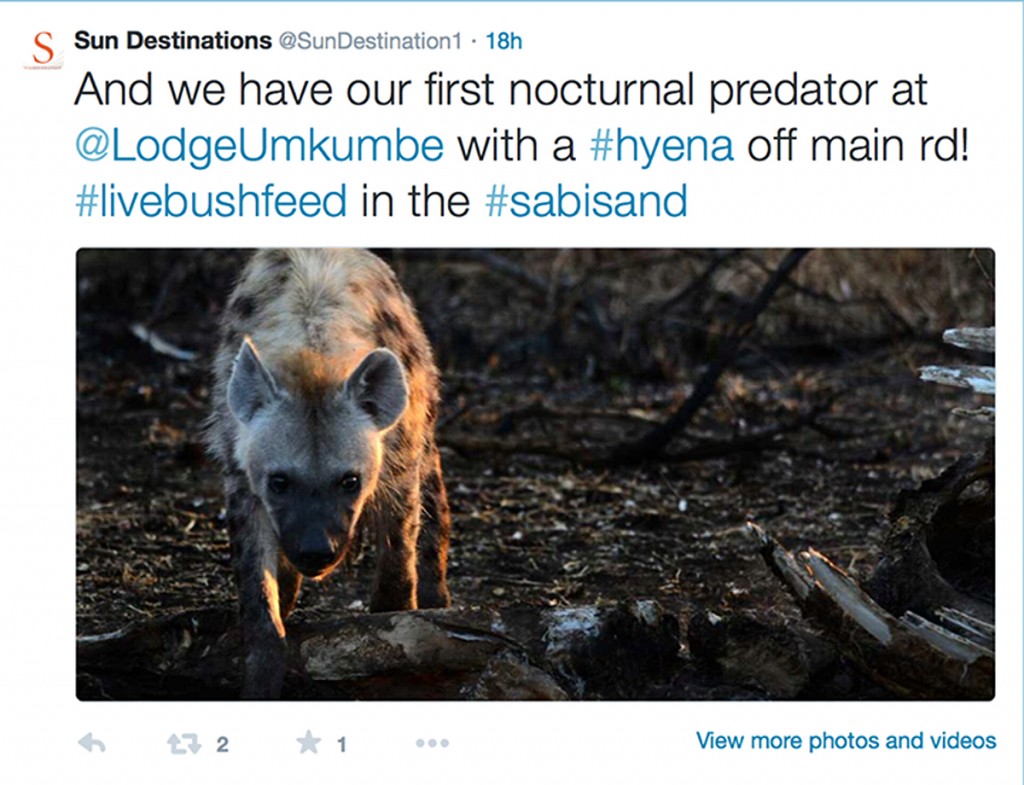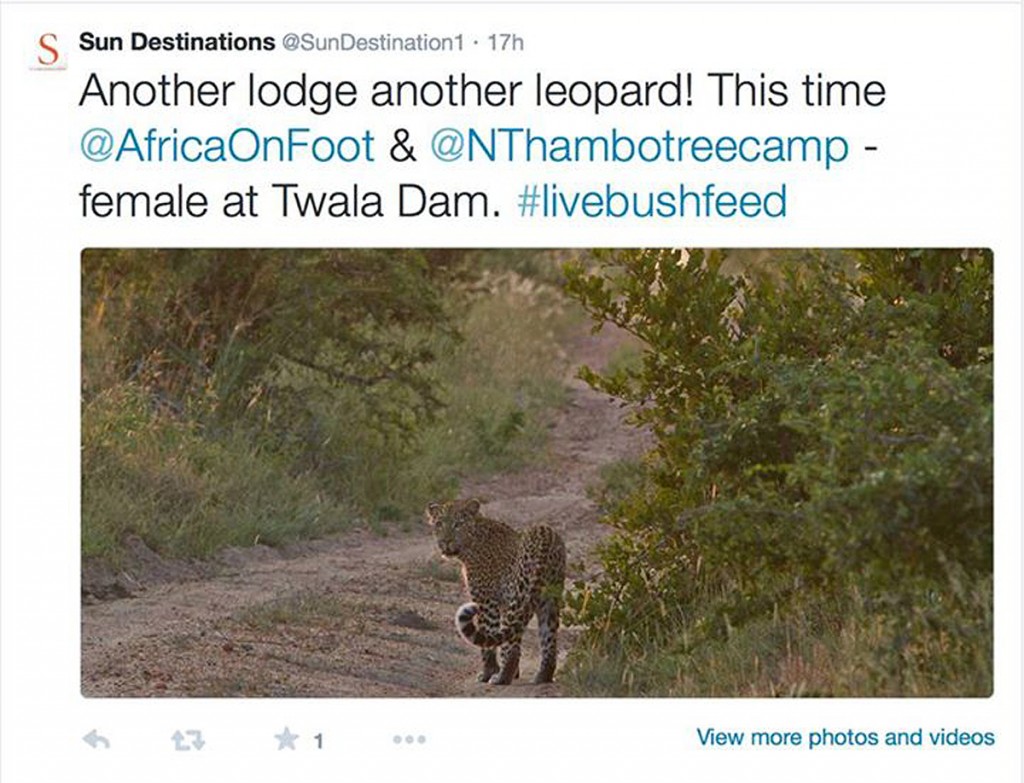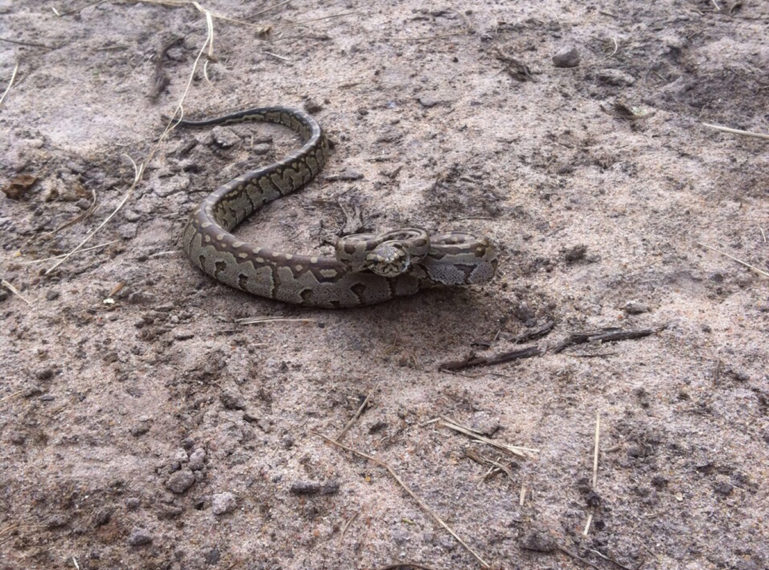
Forget the Black Mamba, We Found an African Rock Python !
Last week we published a post about a close encounter with a black mamba, Africa’s largest venomous snake. With the mamba’s deadly mix of neurotoxic (specifically dendrotoxin ) venoms, it made for an adrenalin filled sighting. This experience was nothing short of enthralling and left herpetologists slithering with excitement and the office based team green with envy.
After our black mamba excitement died down, we received feedback from Greg (Africa on Foot) about an African rock python sighting. Not quite as lethal and toxic black mamba, it’s sheer size and strength was enough to create squeals of delight from guests at Africa on Foot. Greg found the rock python in the vicinty of twin pans dam on the Africa on Foot traverse.
The African rock python loves water and although not classed as an aquatic snake, it does hunt in the water. Like most reptiles, snakes are exothermic. This means they need to spend time in sun’s heat to thermoregulate their body temperature. Greg found the snake basking in the sun and guests were able to take photos of the python’s rather defensive behaviour. Greg found the perfect window of opportunity and managed to spend a few minutes with this cheeky African rock python.
So, why have we seen such prolific snake activity this week in the Klaserie? The seasons are beginning to change, bringing about cooler weather in the evenings. Snakes are active during the day and the hotter it is, the more active they are. They need to generate as much heat as possible to thermoregulate.
6 Facts About the African Rock Python:
- They are ambush predators who rely on the cover of darkness to hunt.
- Pythons can live up to 30 years of age.
- These snakes kill prey via constriction. Each time the prey exhales, the python tightens its grip.
- Parts of the pythons skeleton are used as charms in cultural rituals.
- The female hugs her 30 – 50 eggs during the incubation period as a protective mechanism.
- The African rock python may submerge itself in water to thermoregulate (control its body temperature).
The African rock python is a fascinating snake. We’ve included a few photos of a python kill that one of our rangers captured on camera – this did not happen at Greg’s sighting. We just thought you’d be curious as to how this snake attacks and kills its prey.
